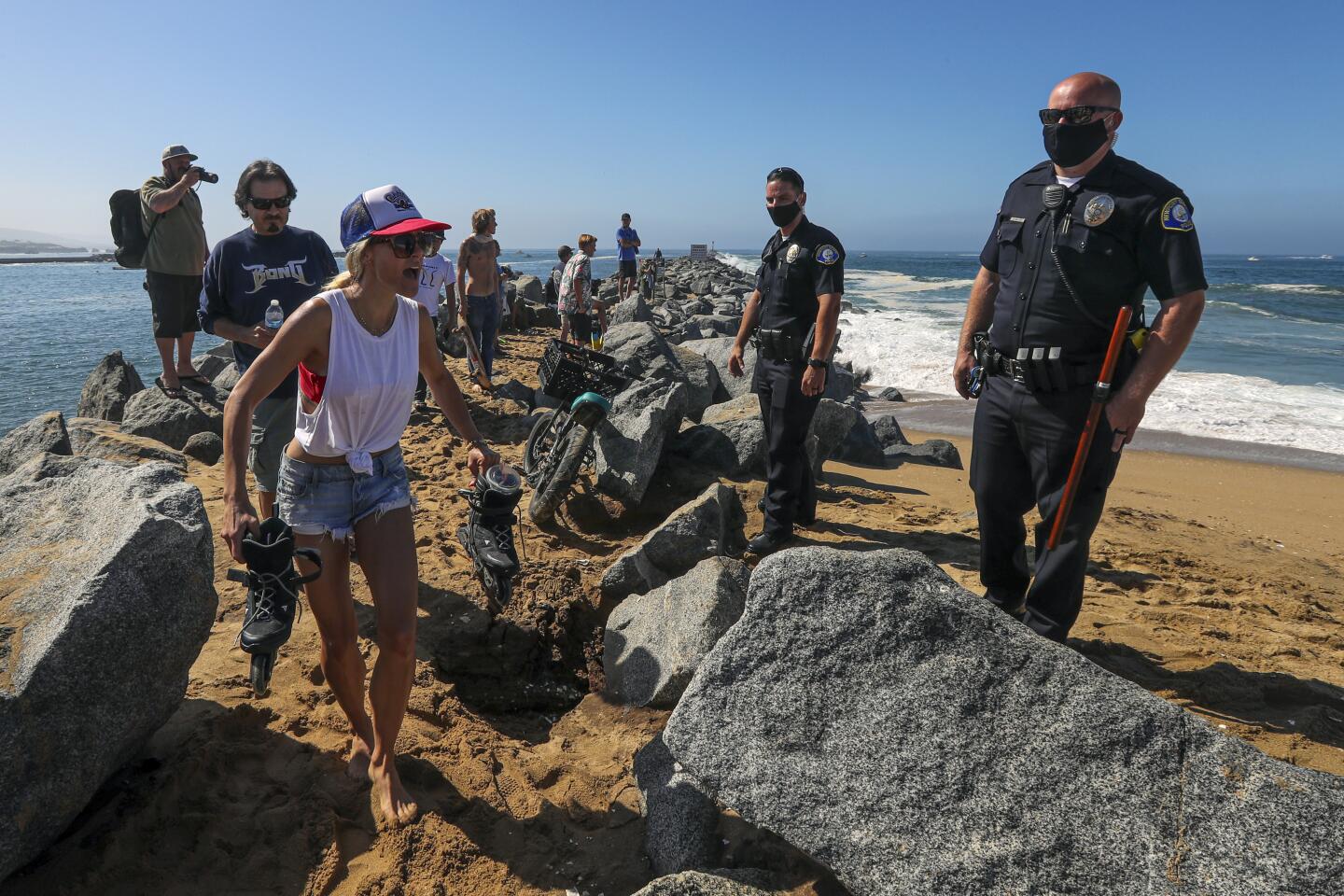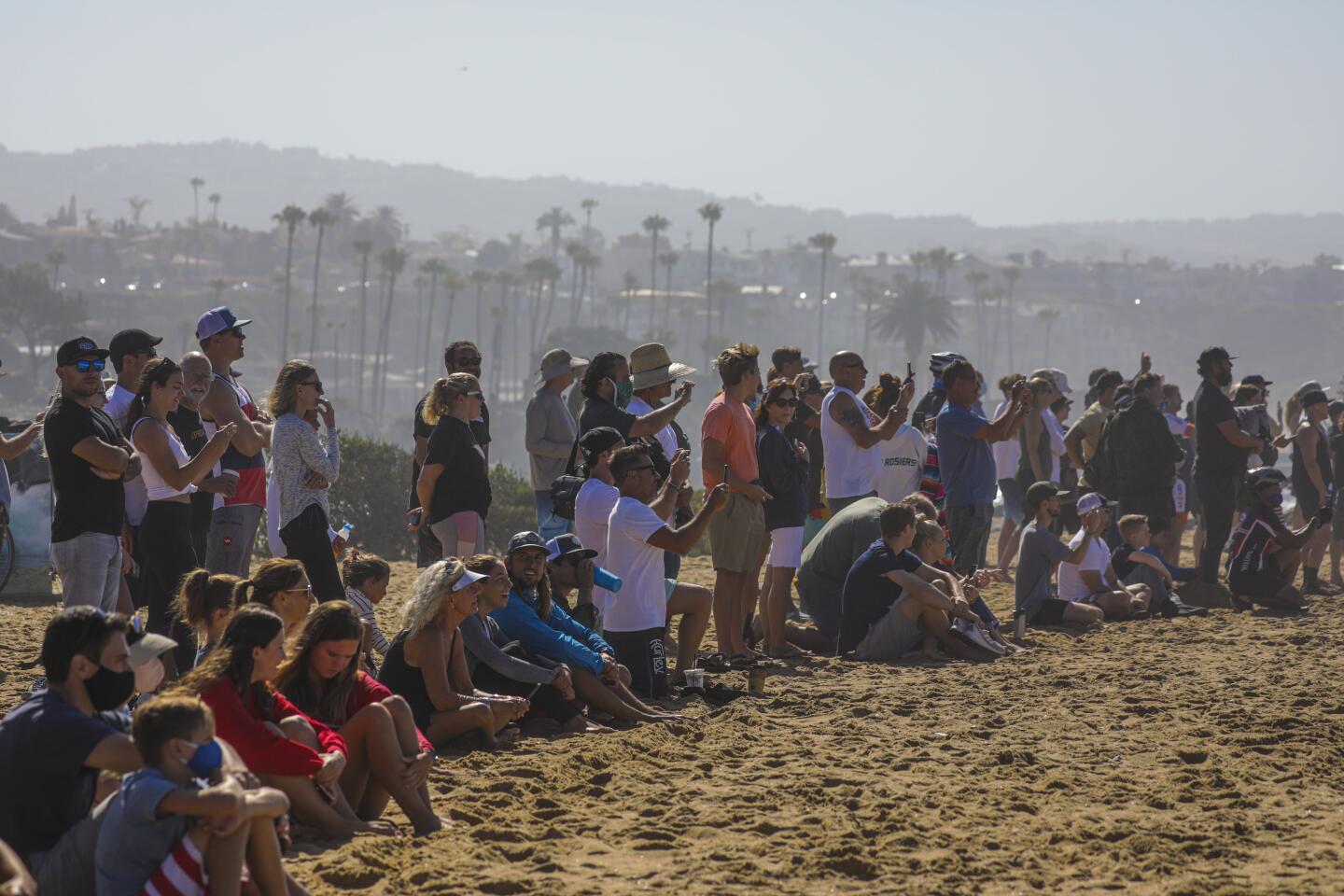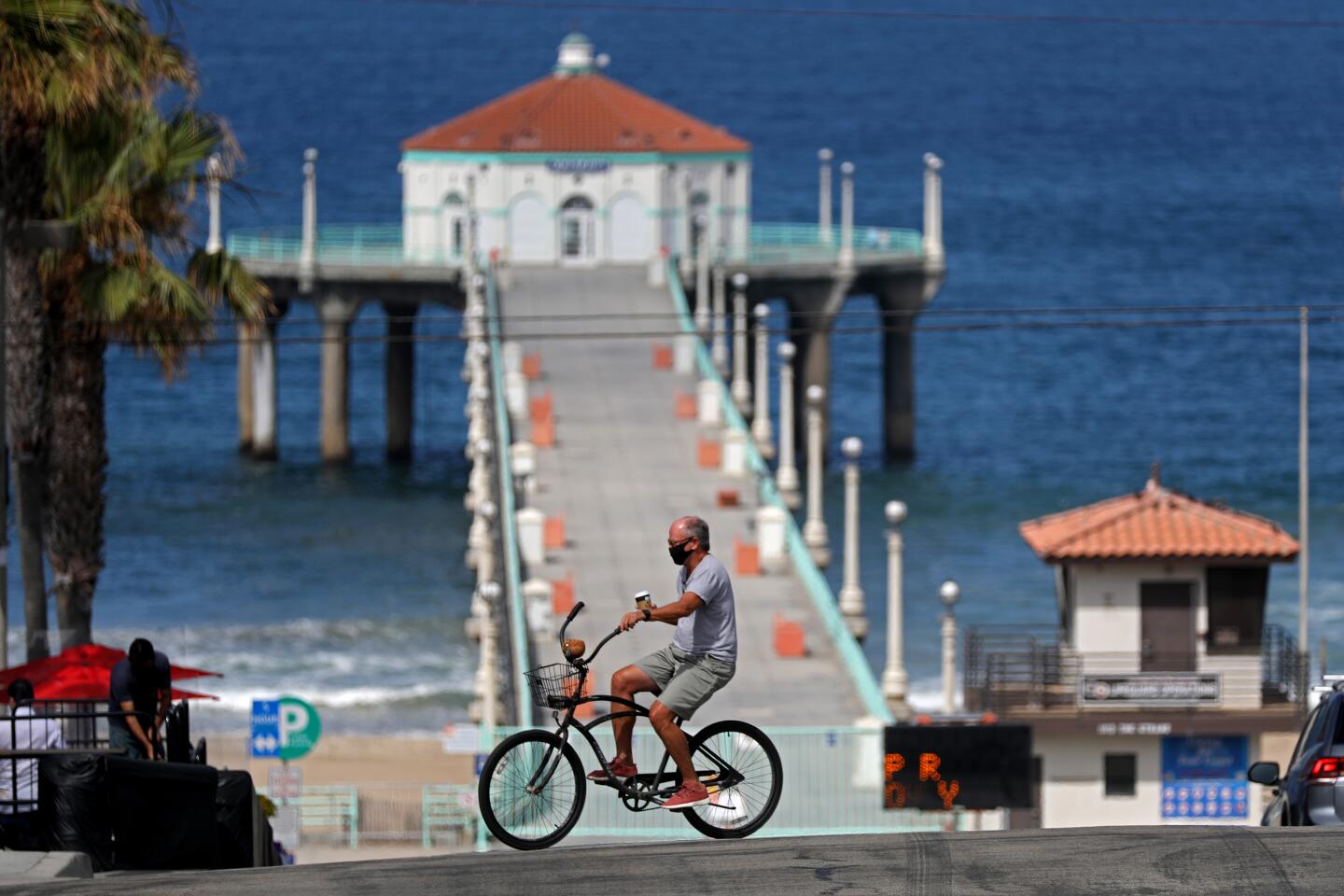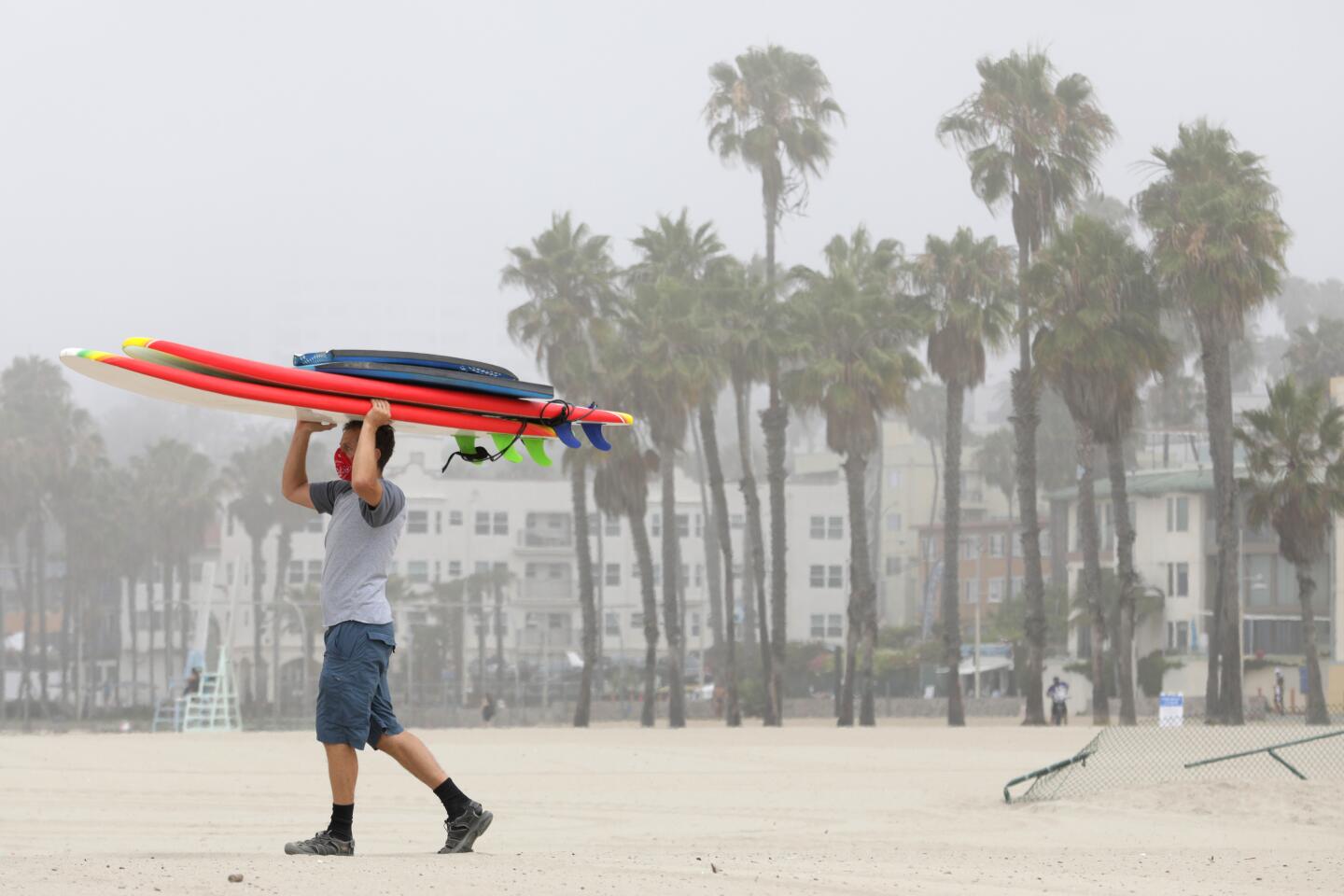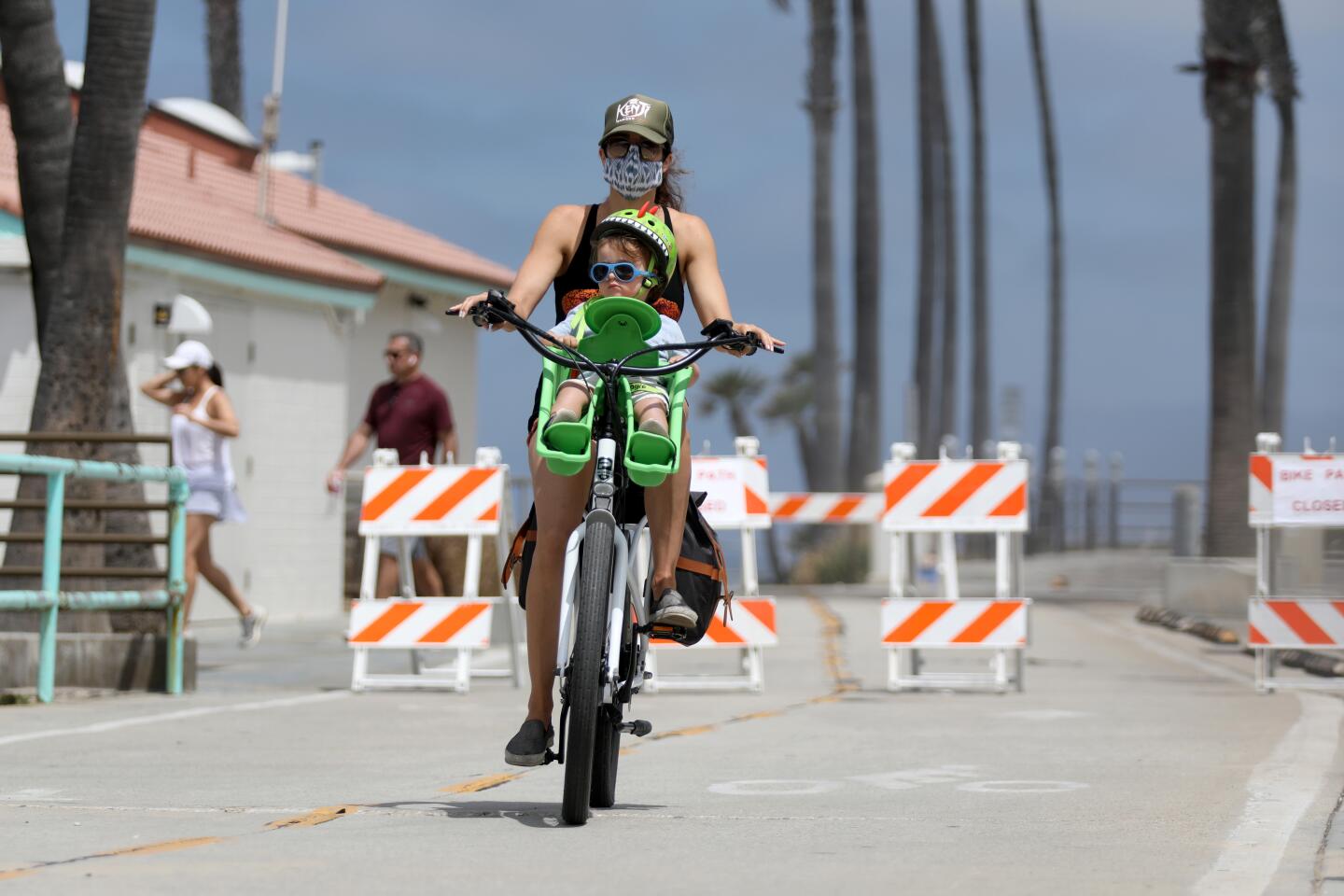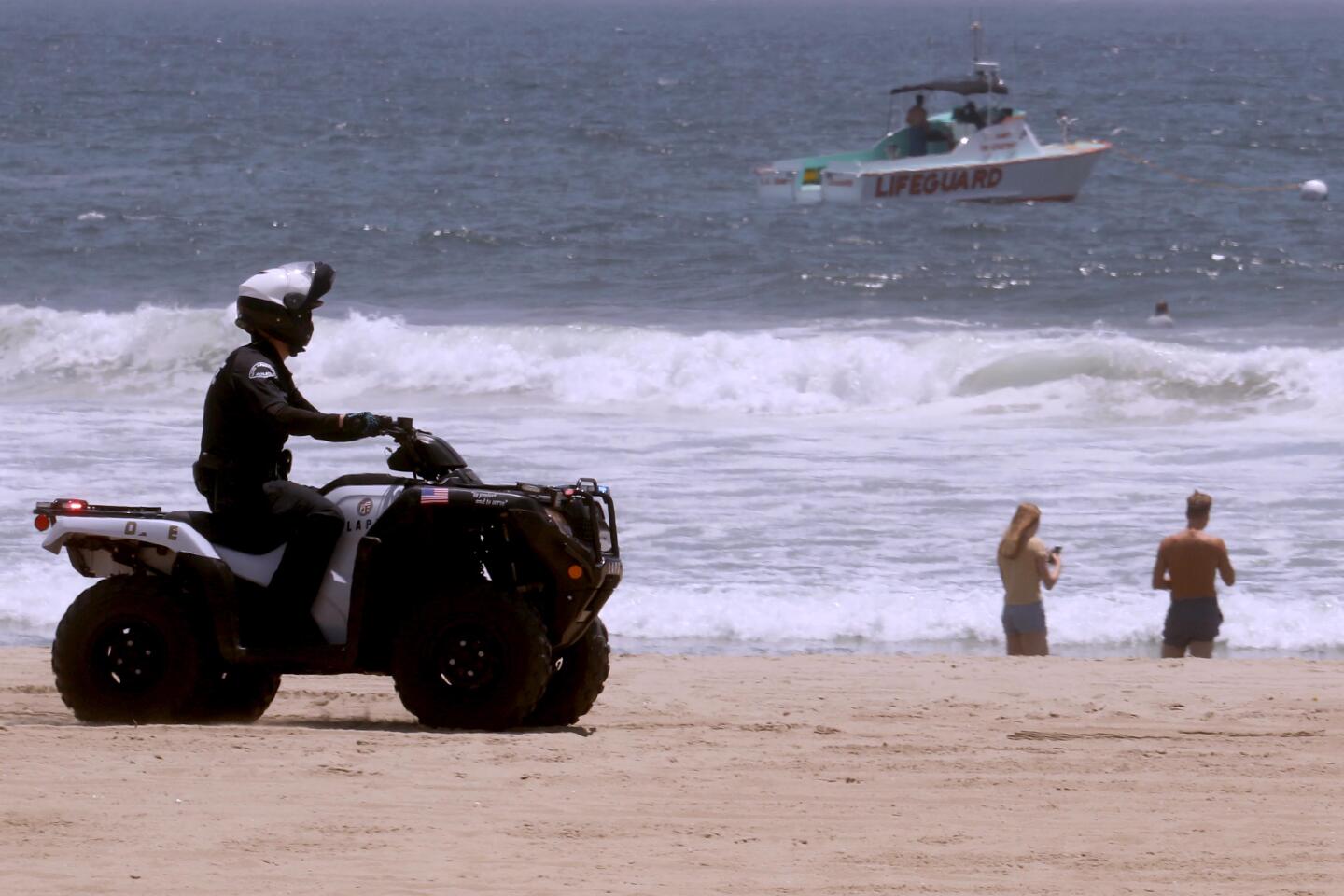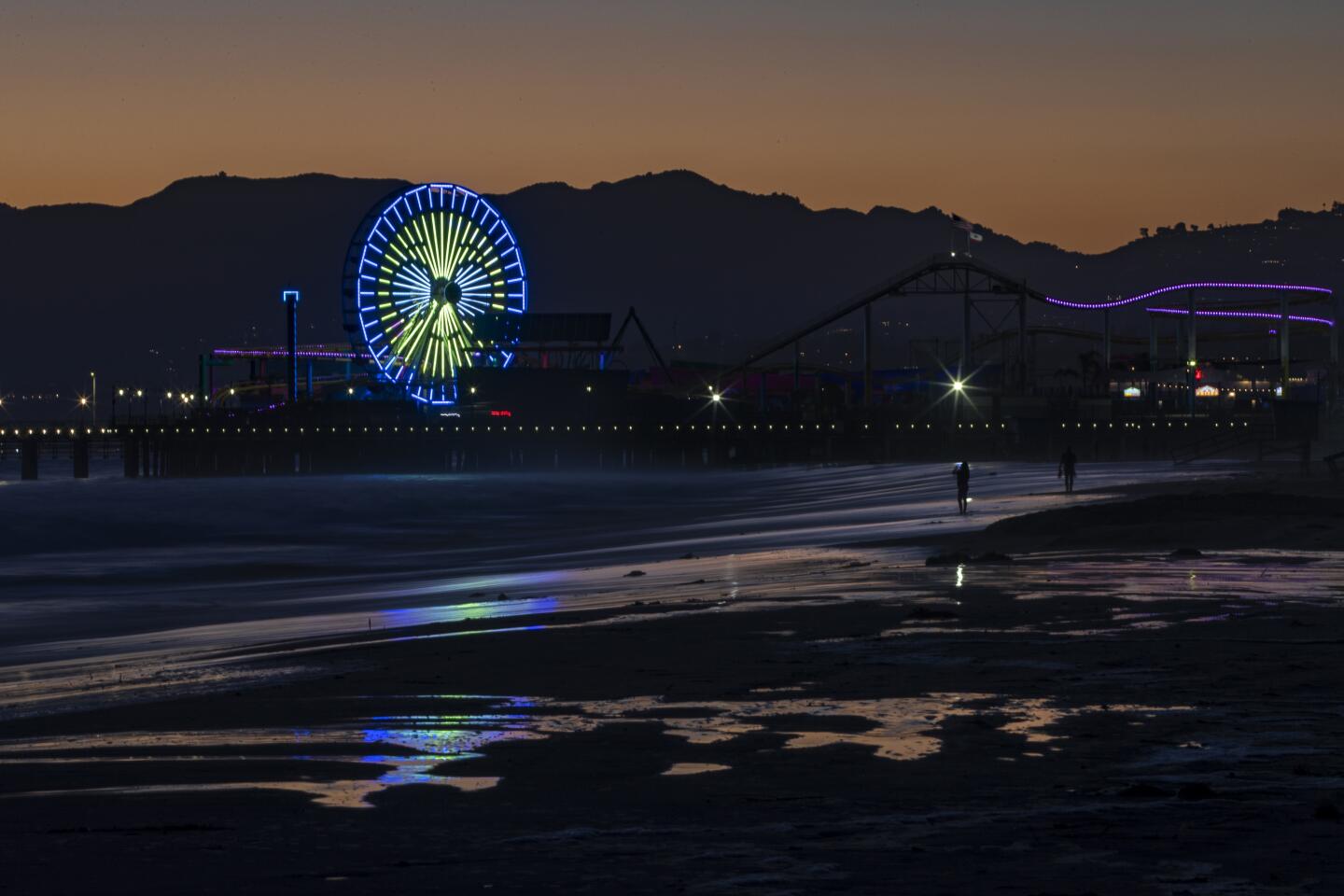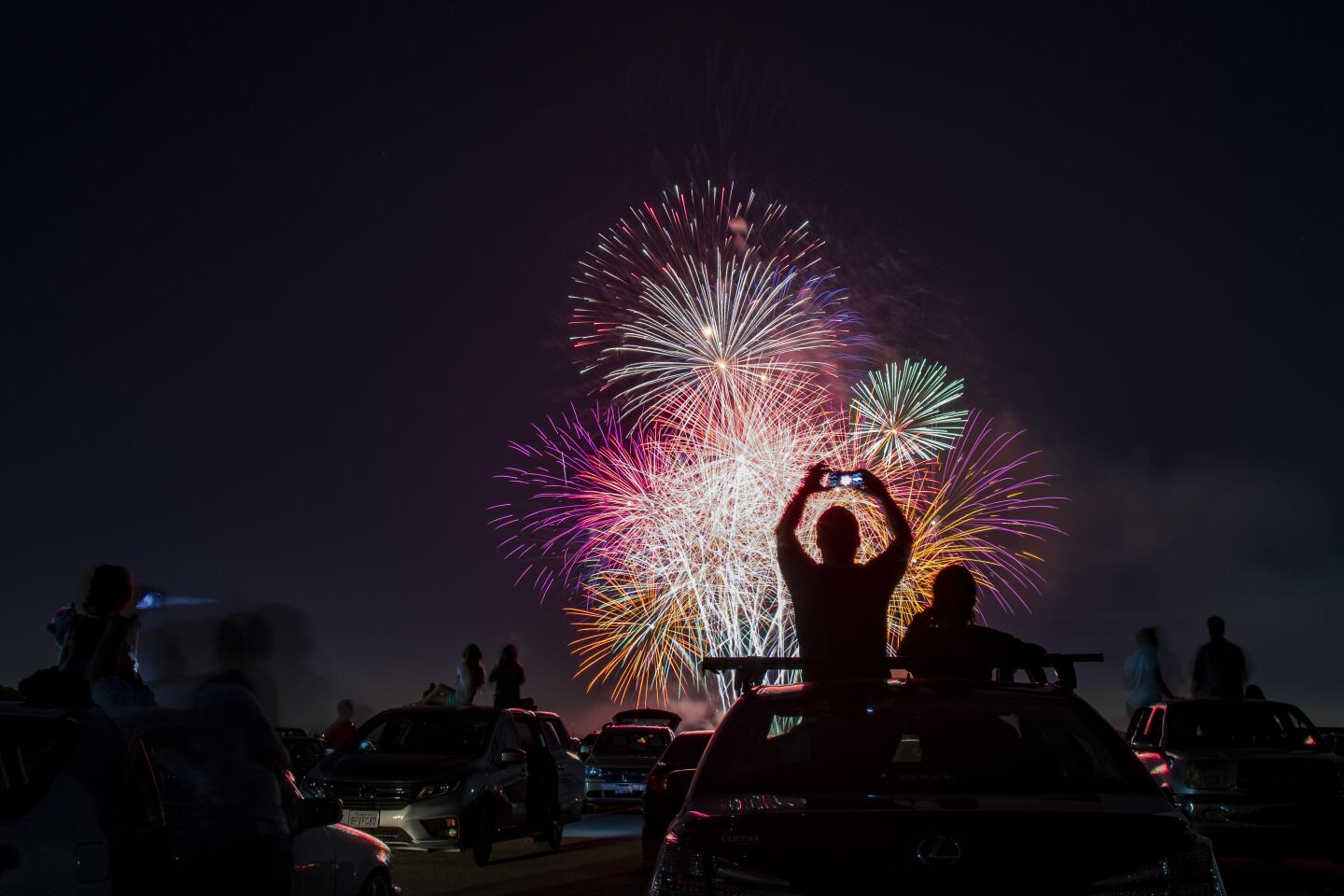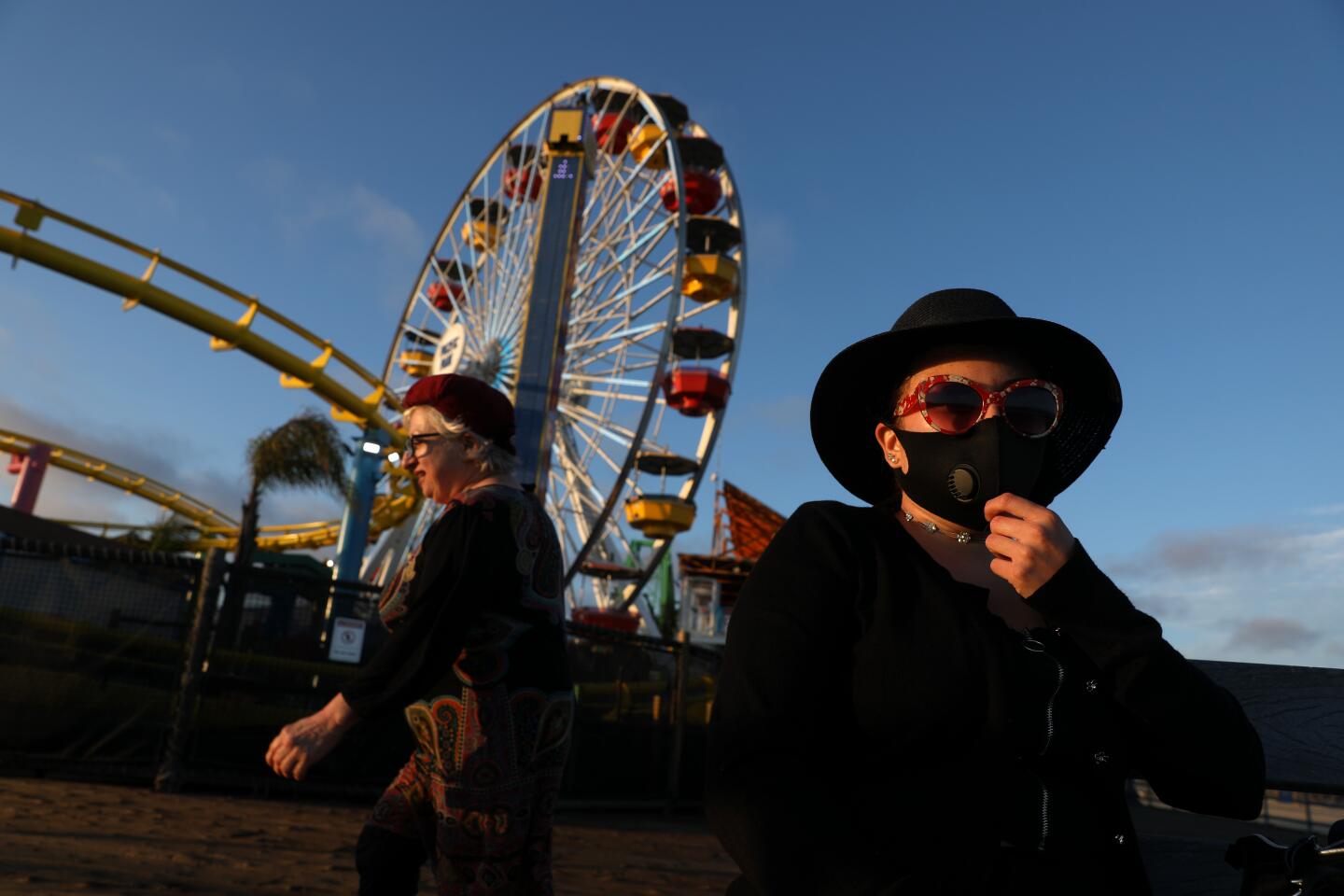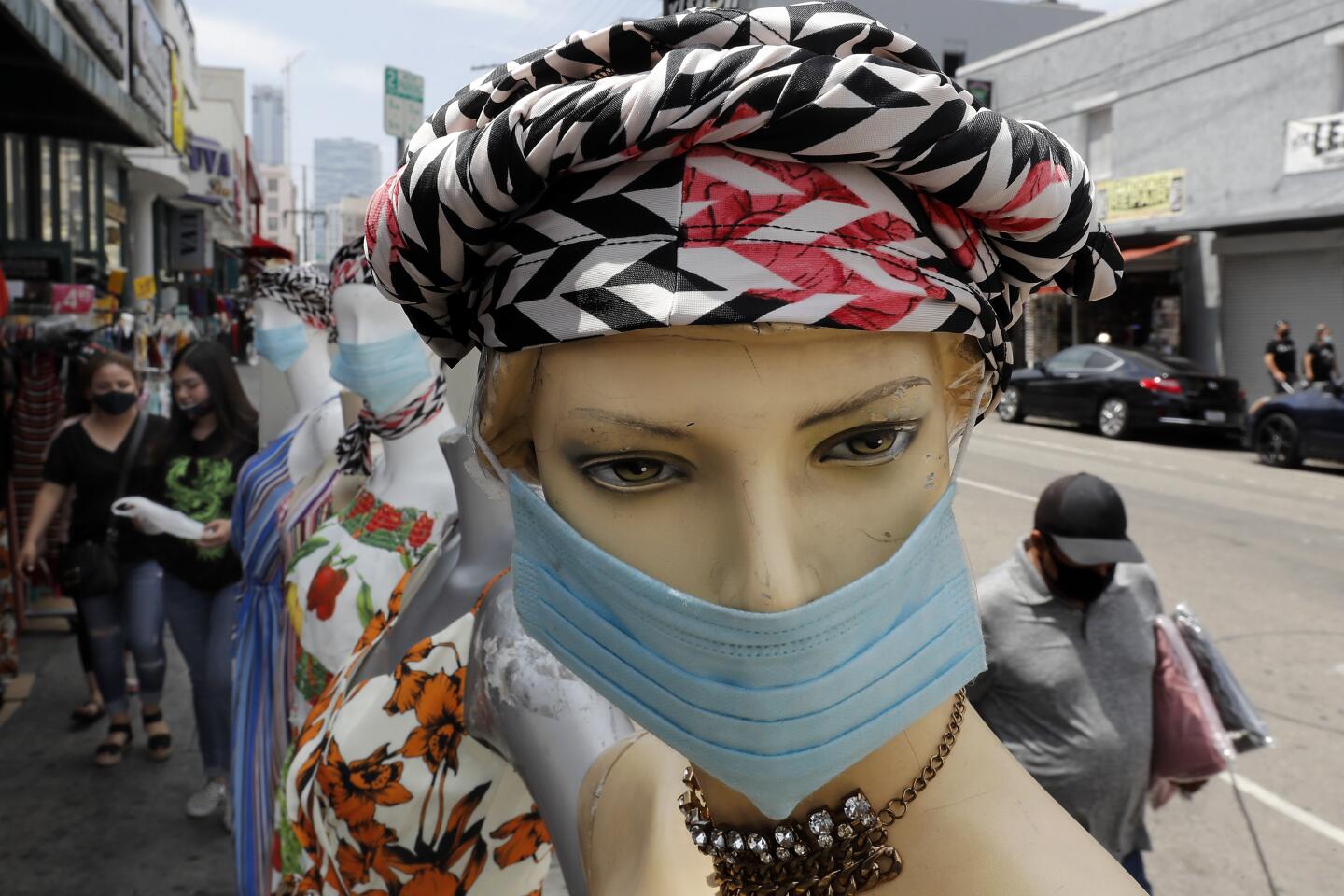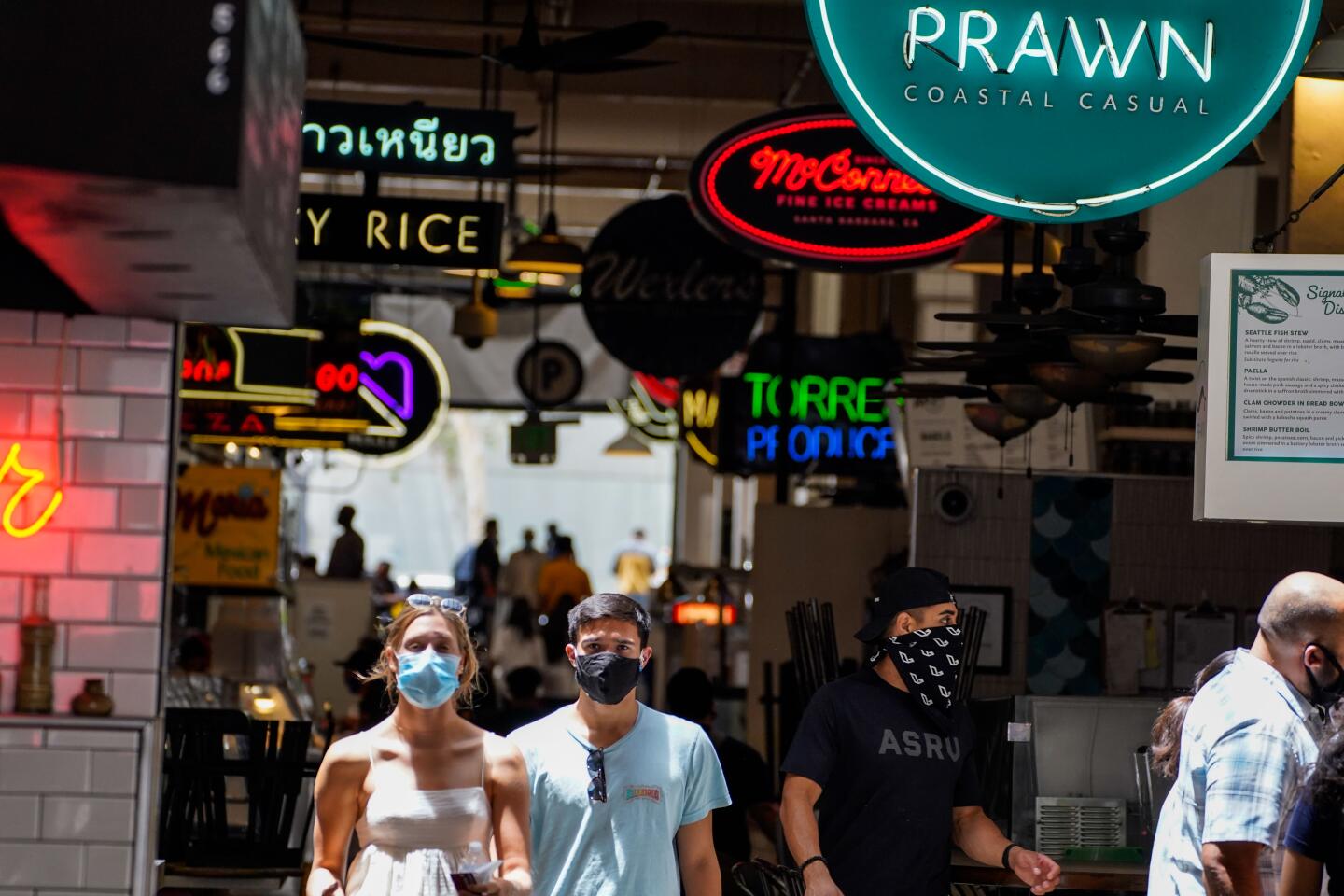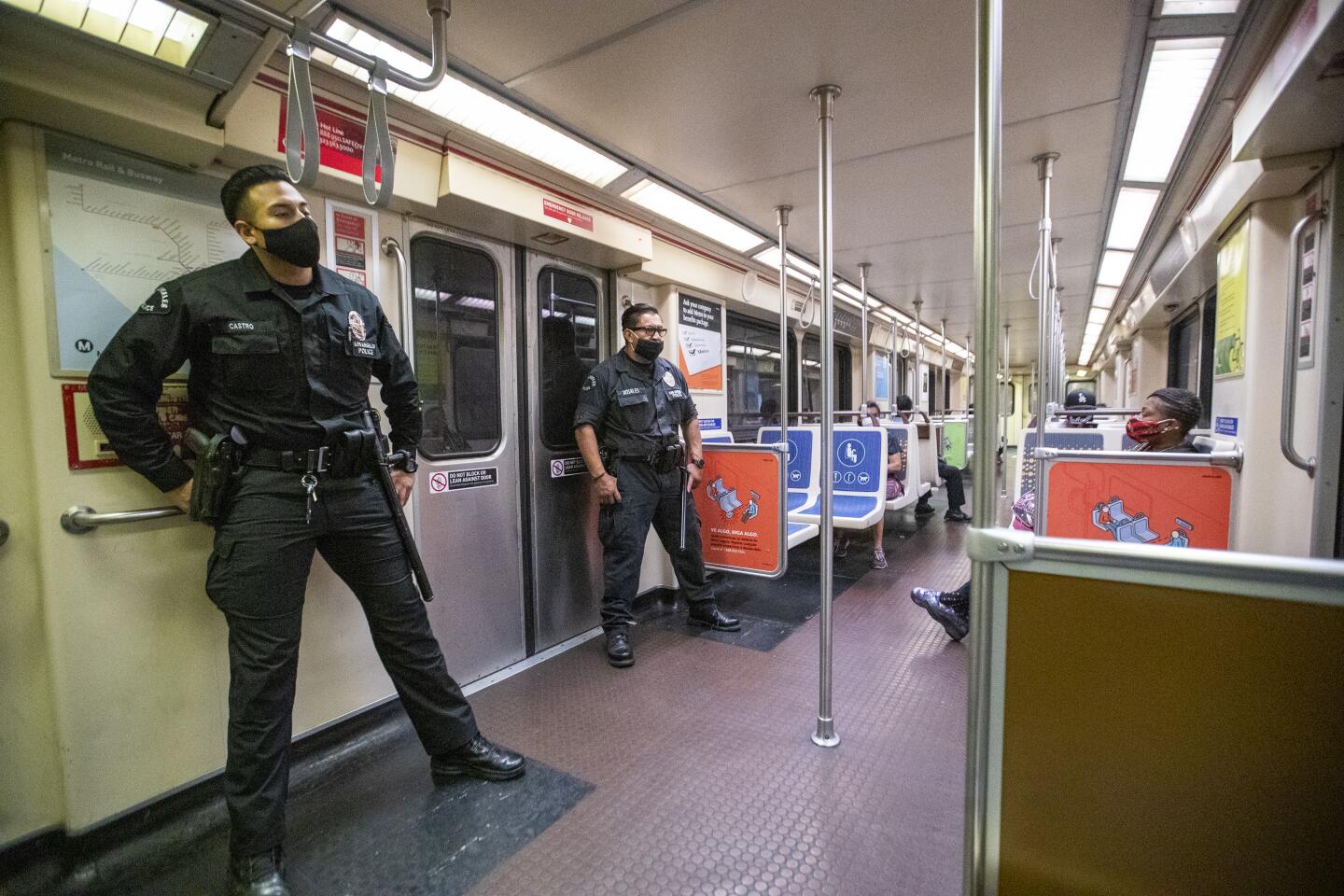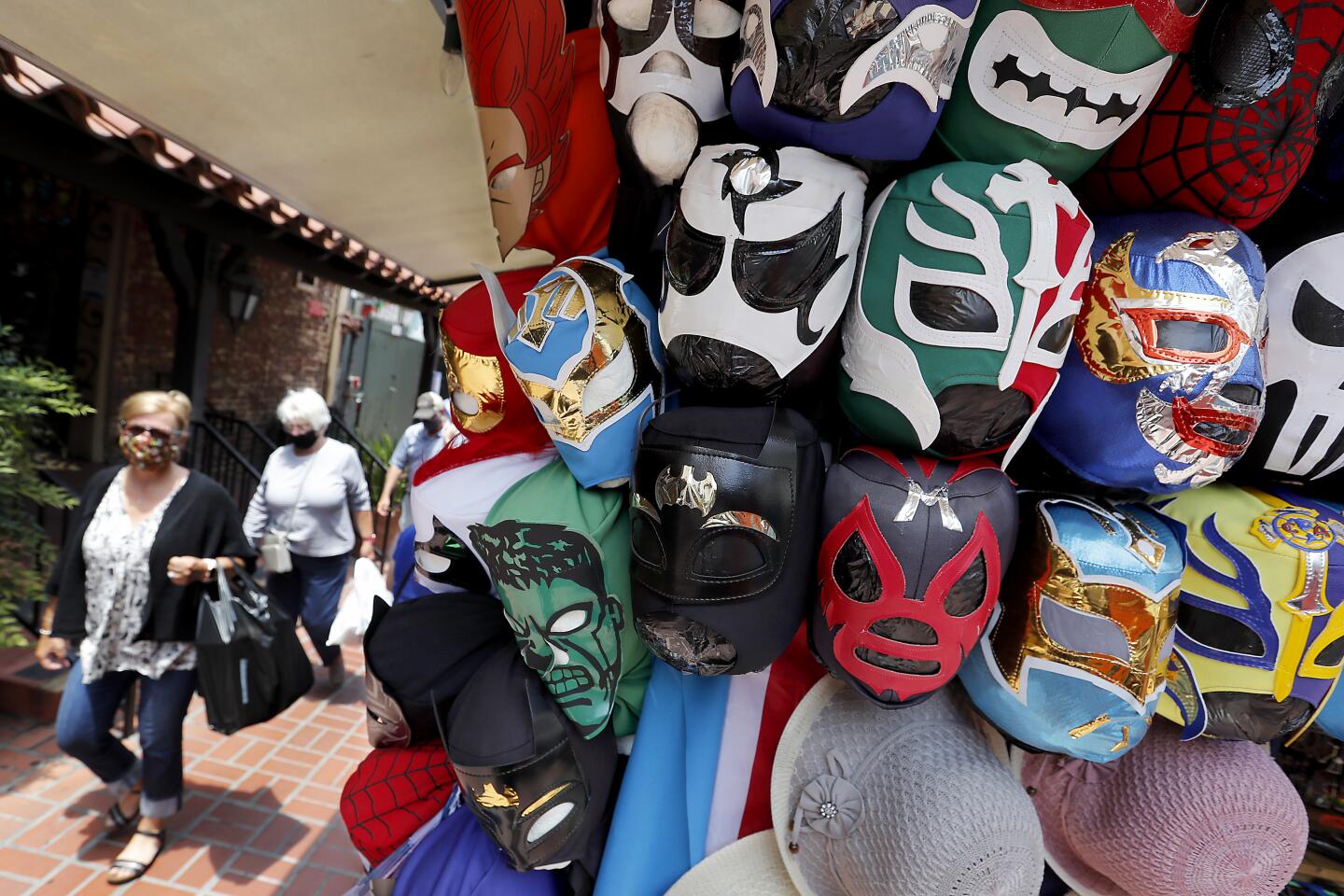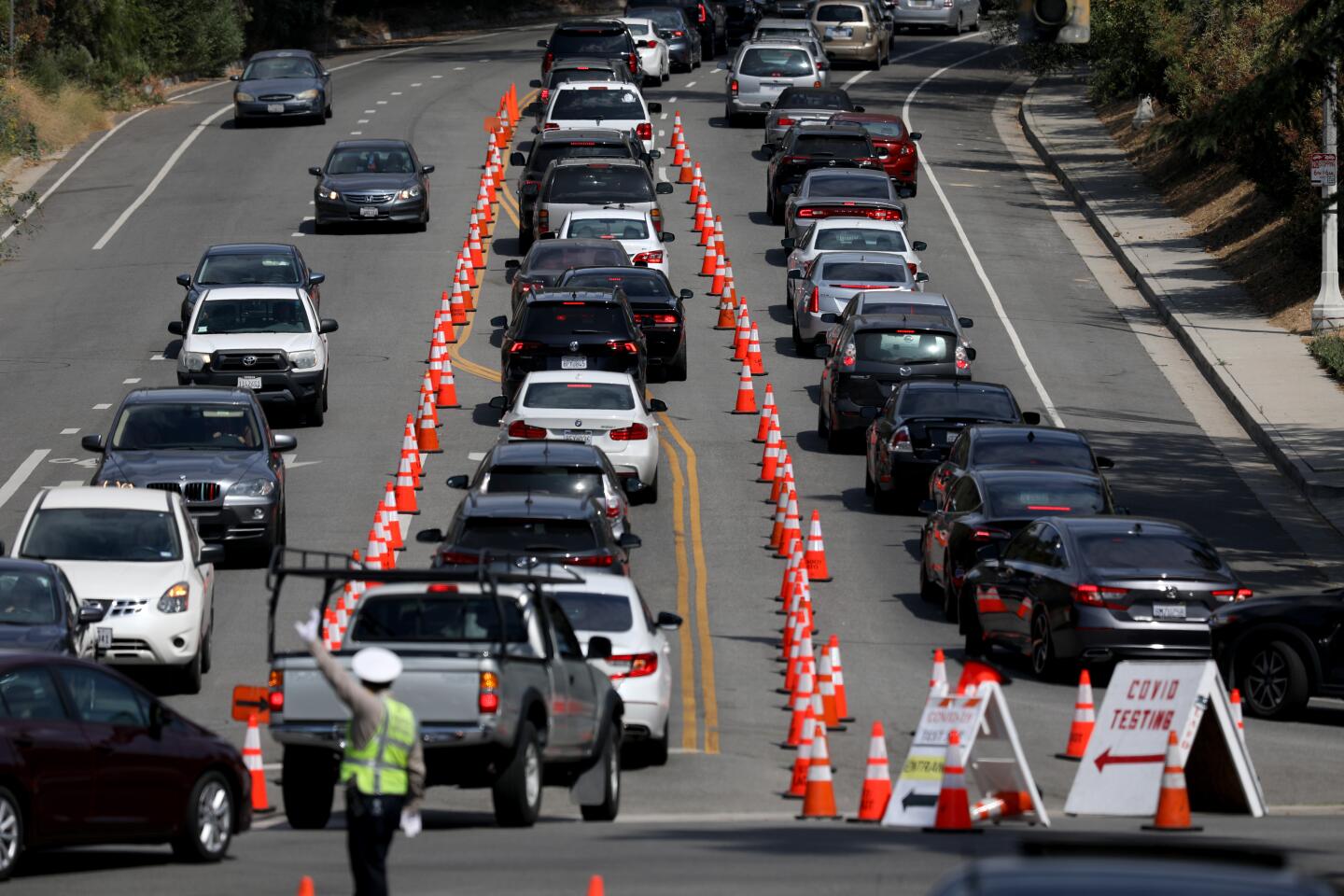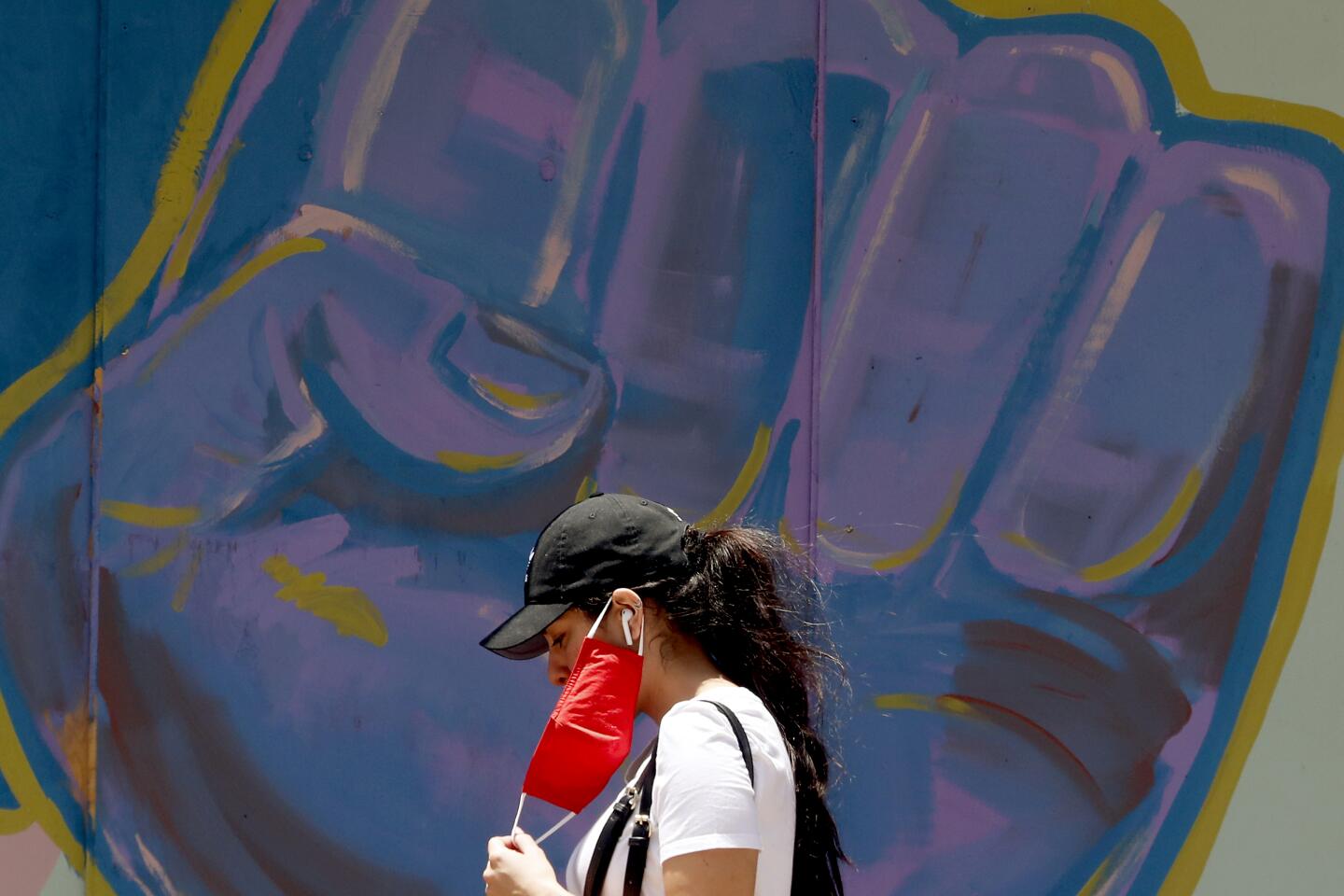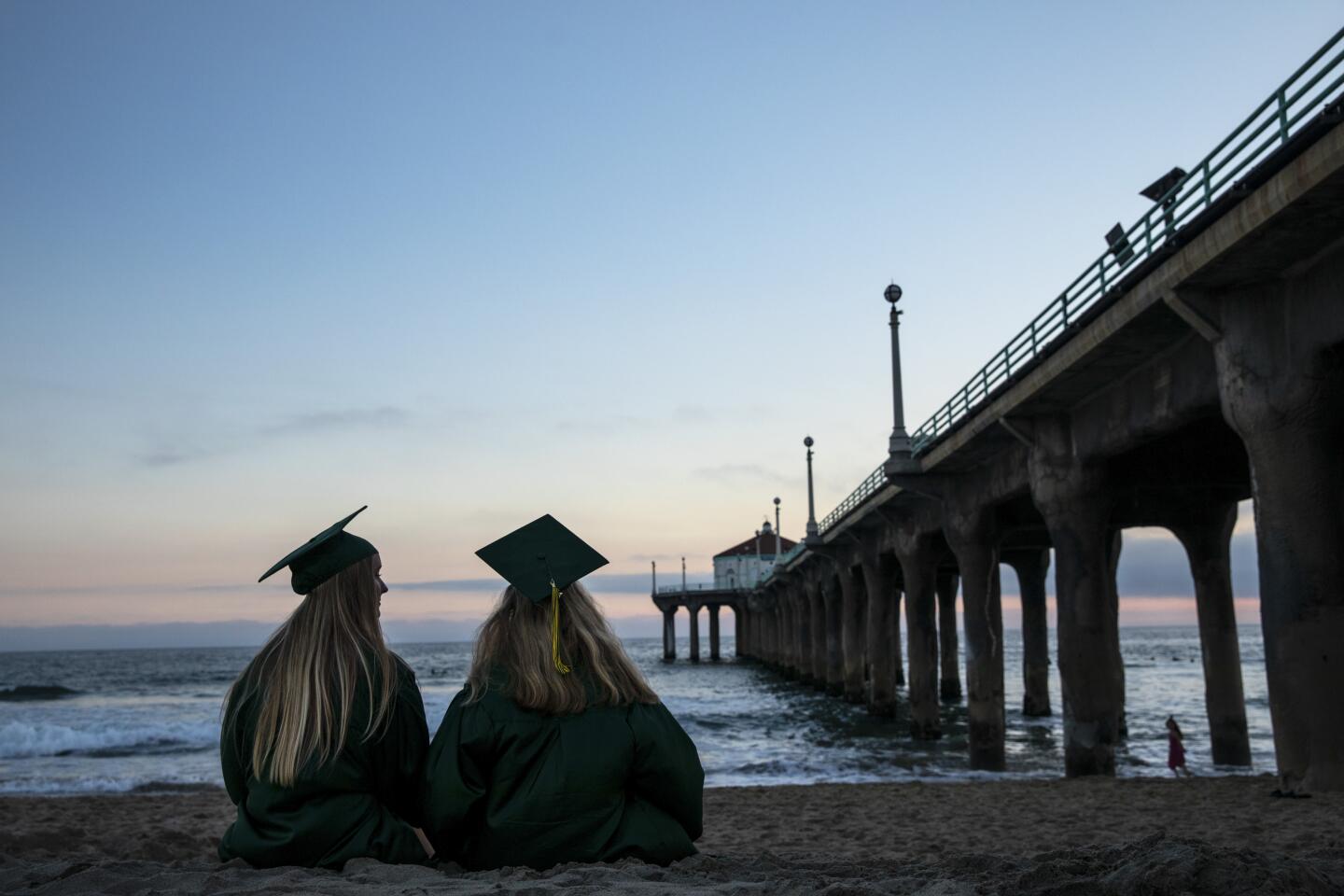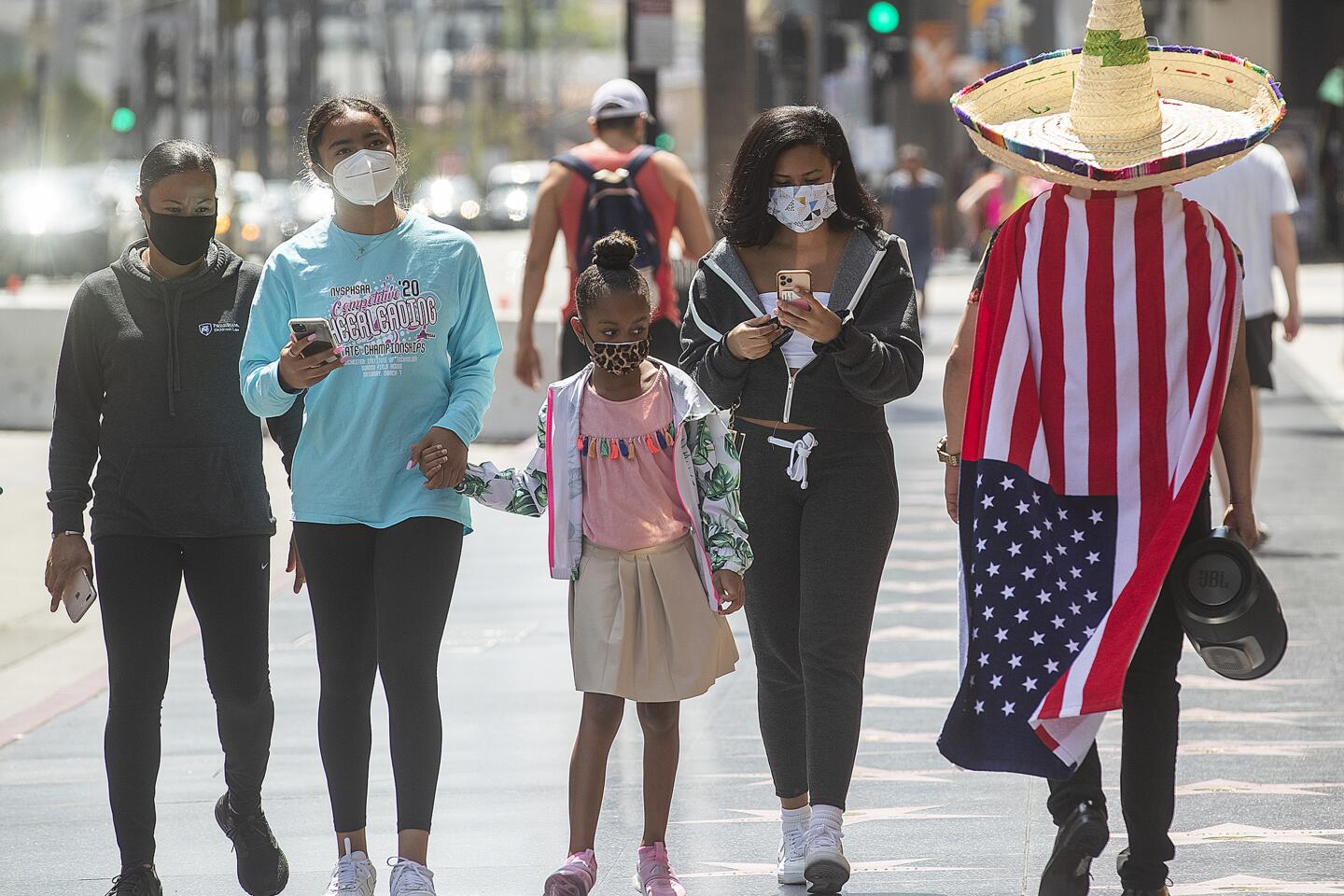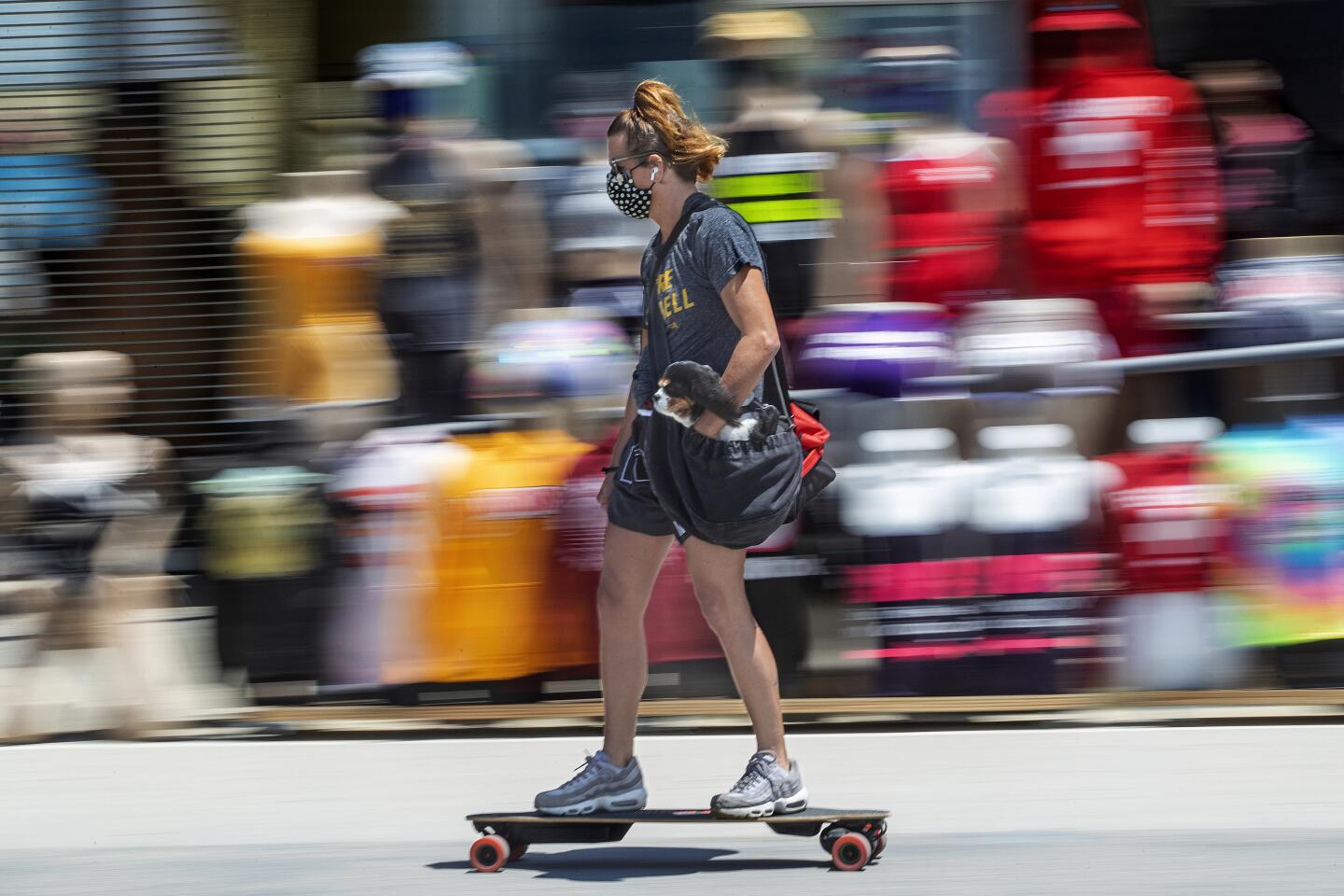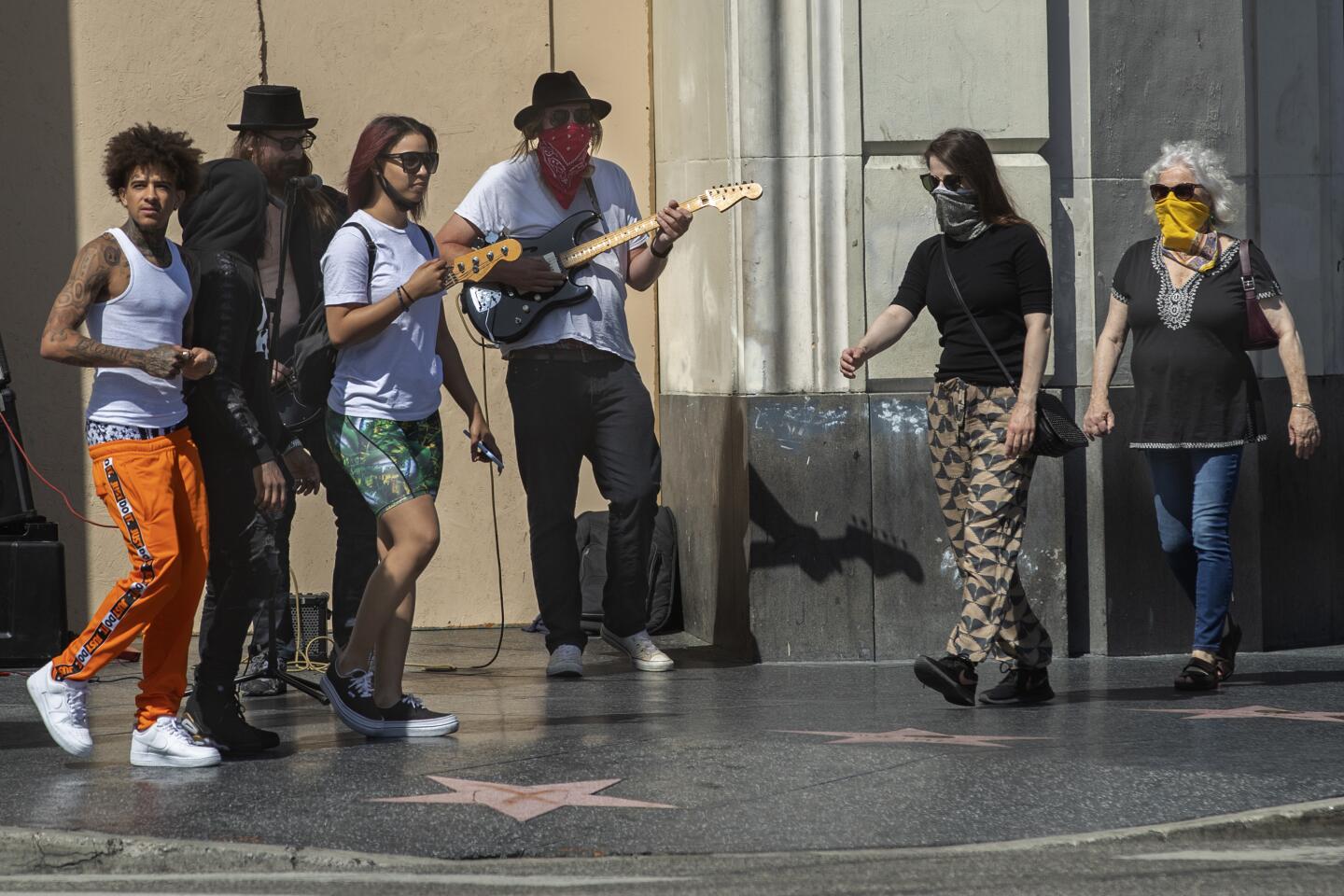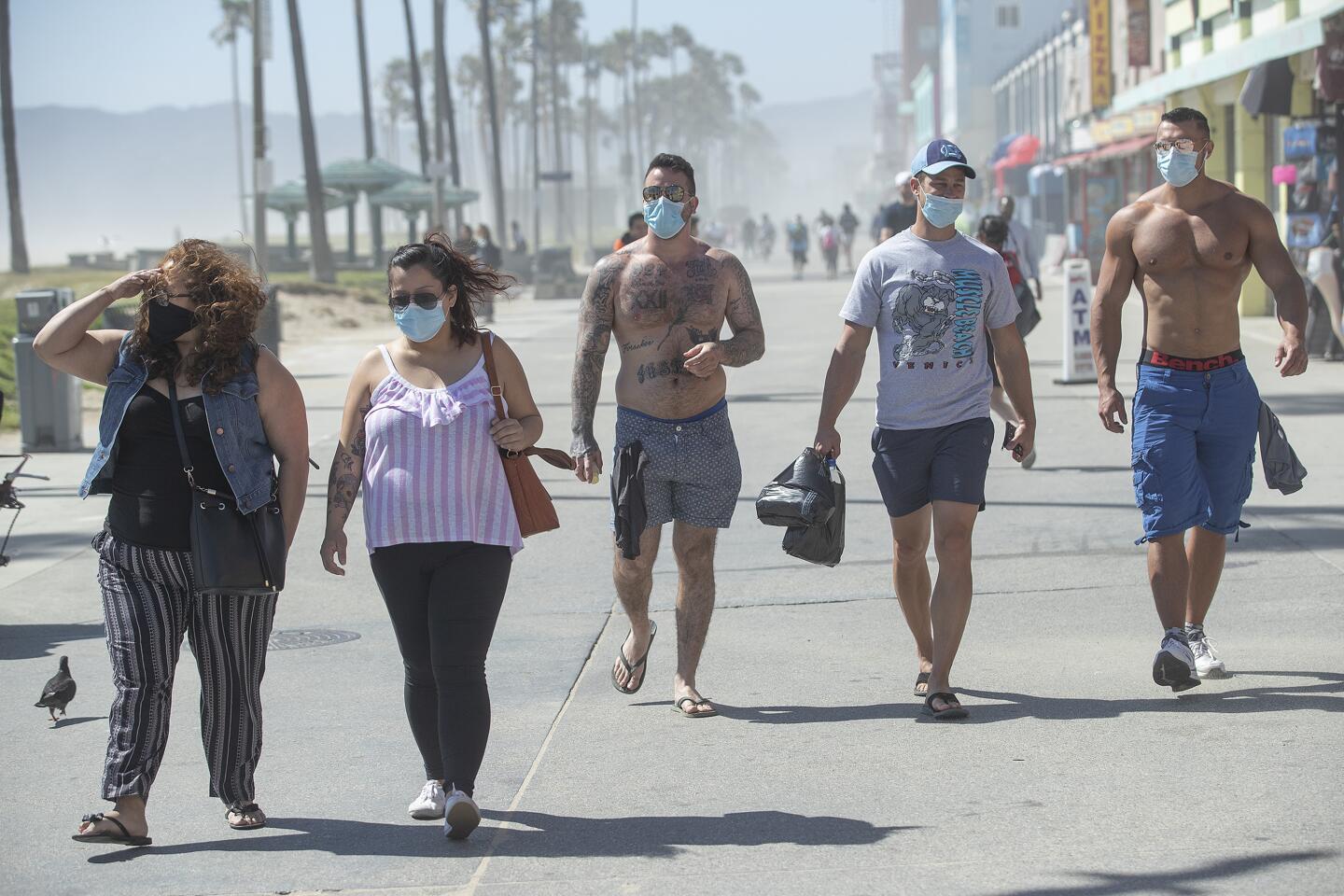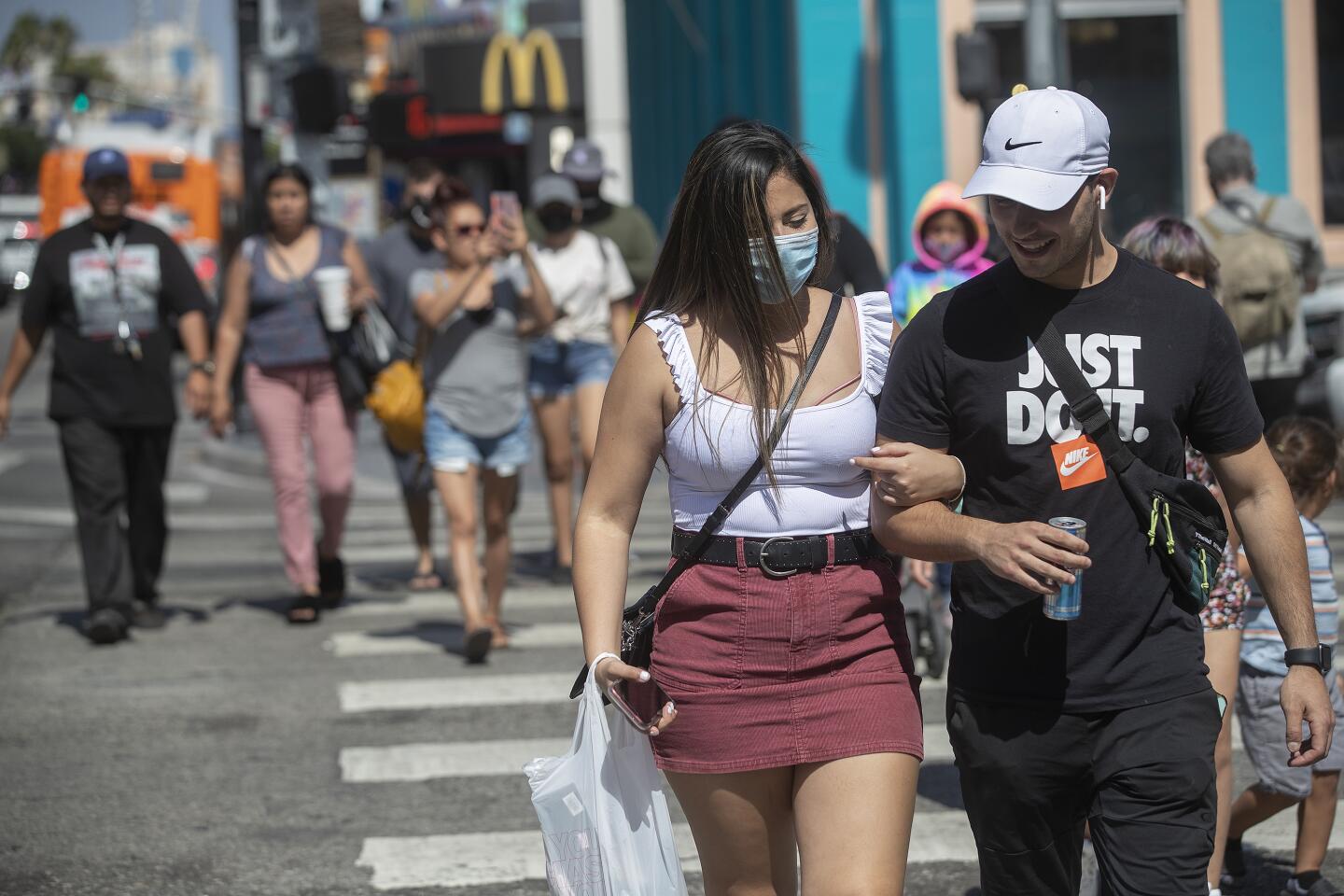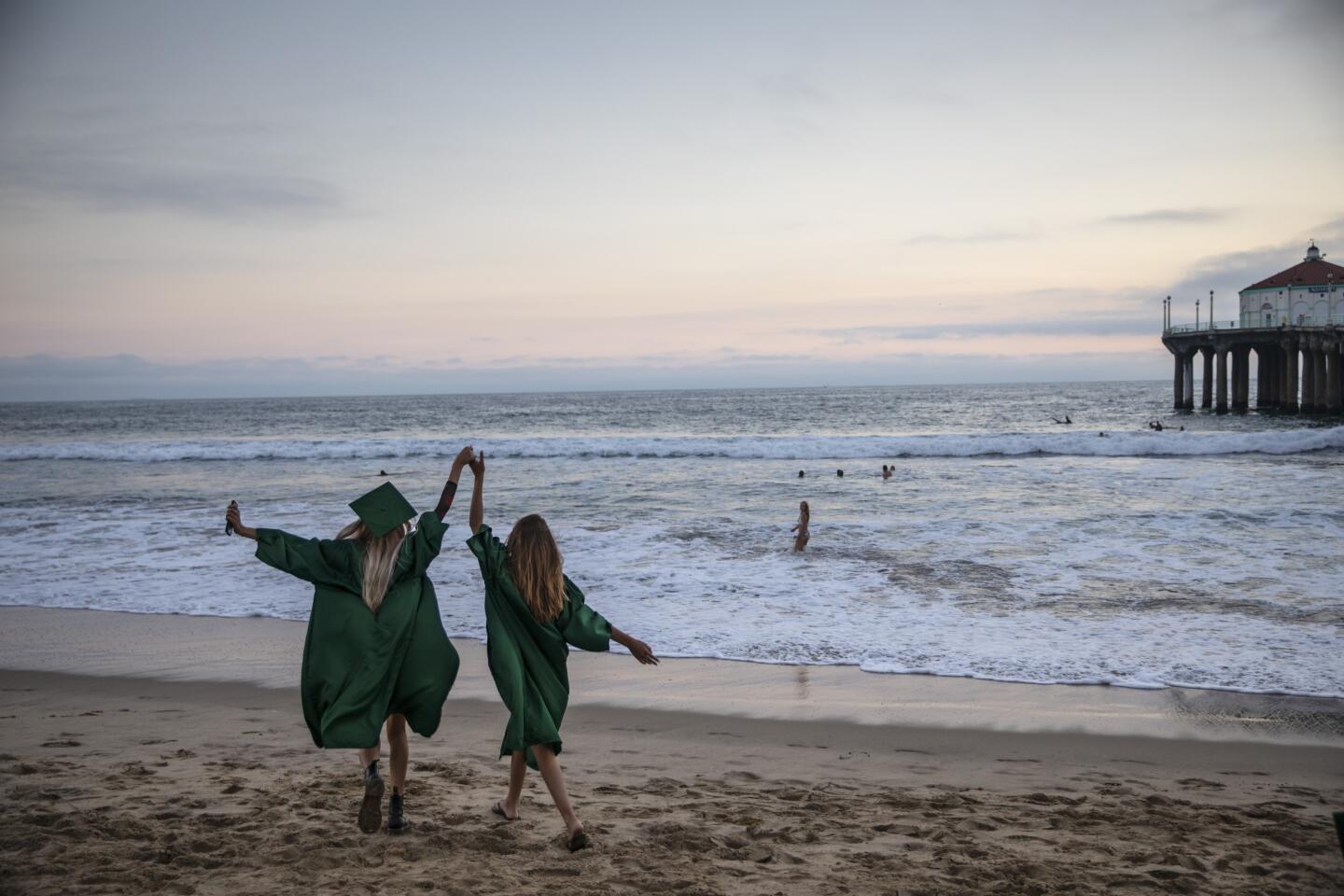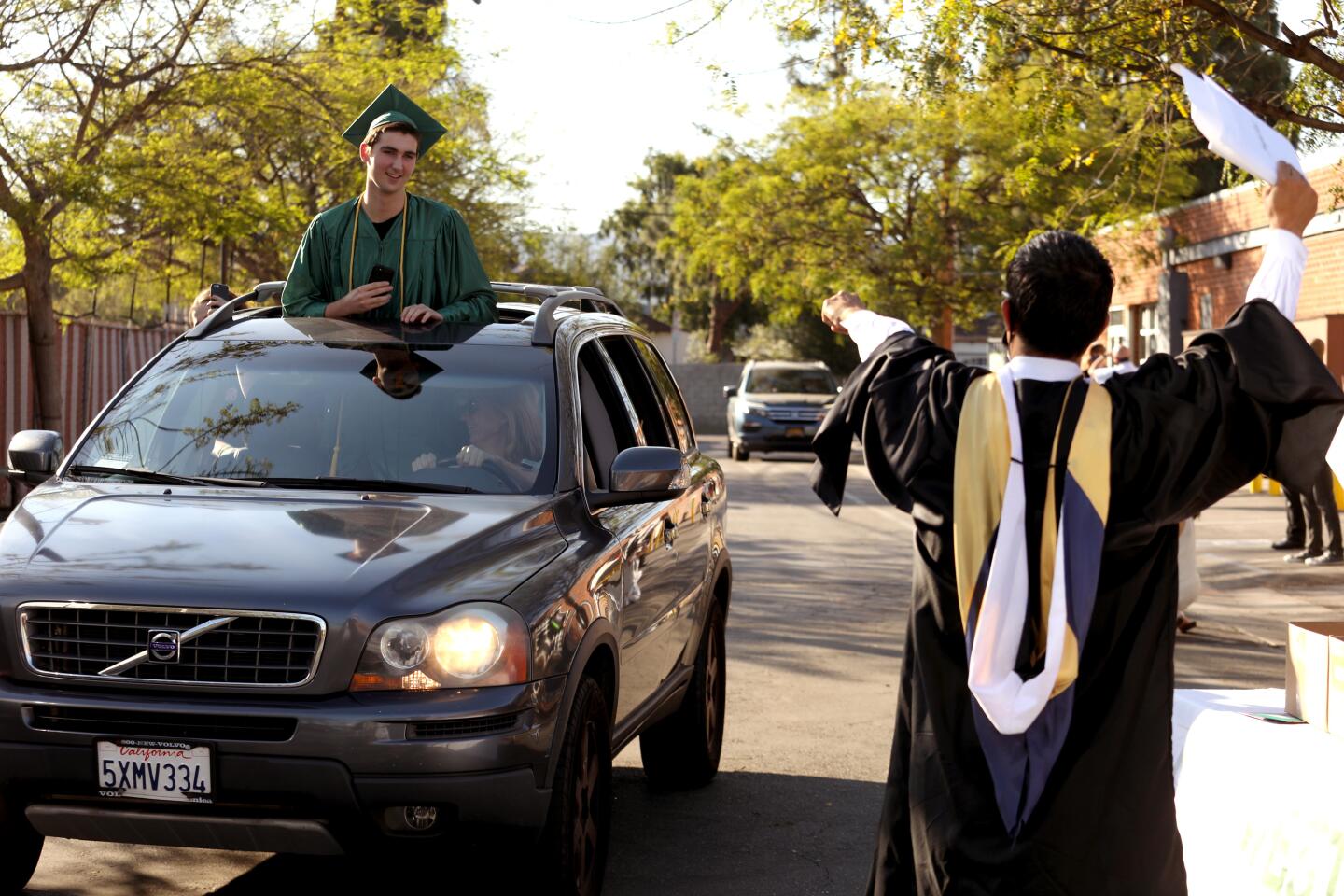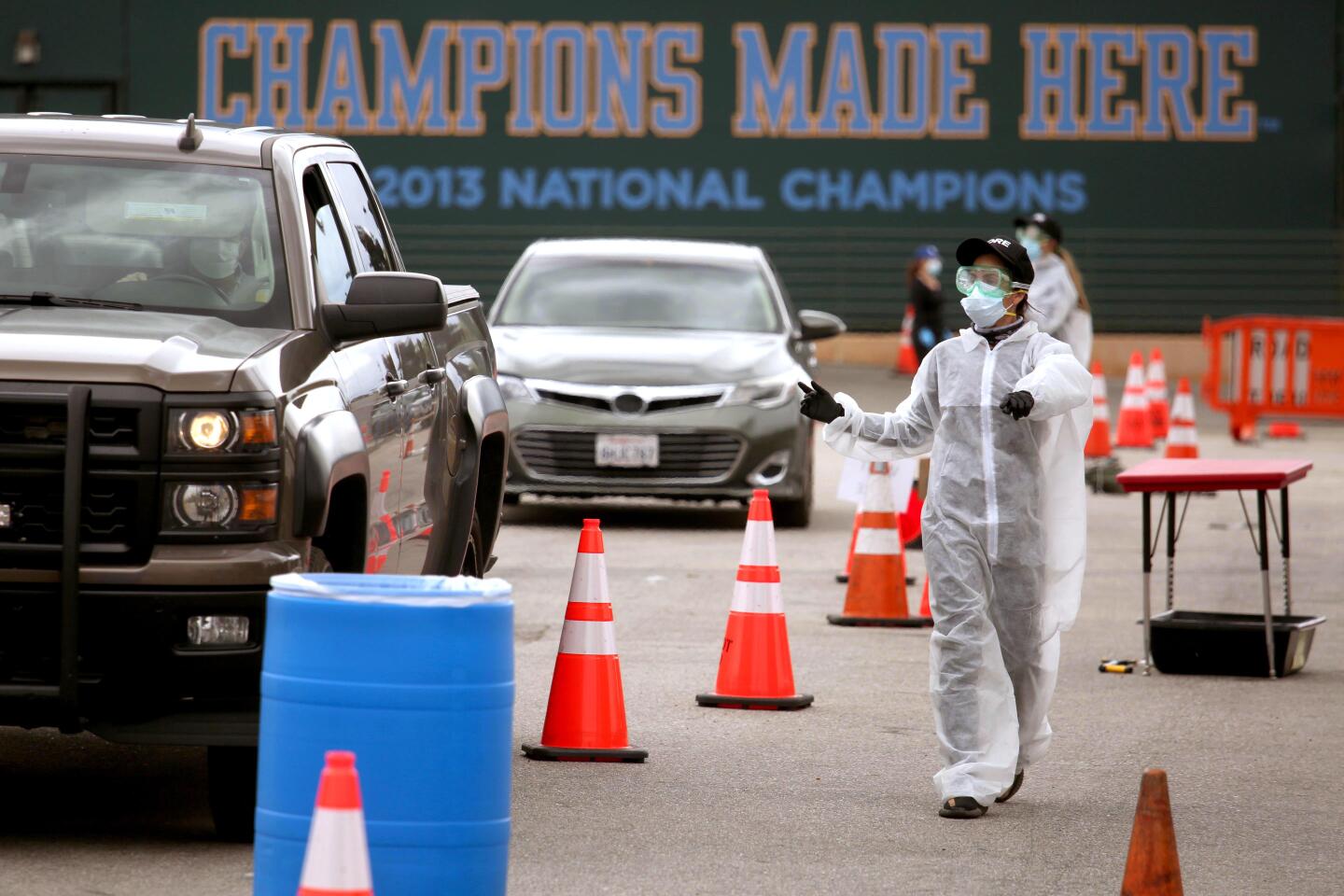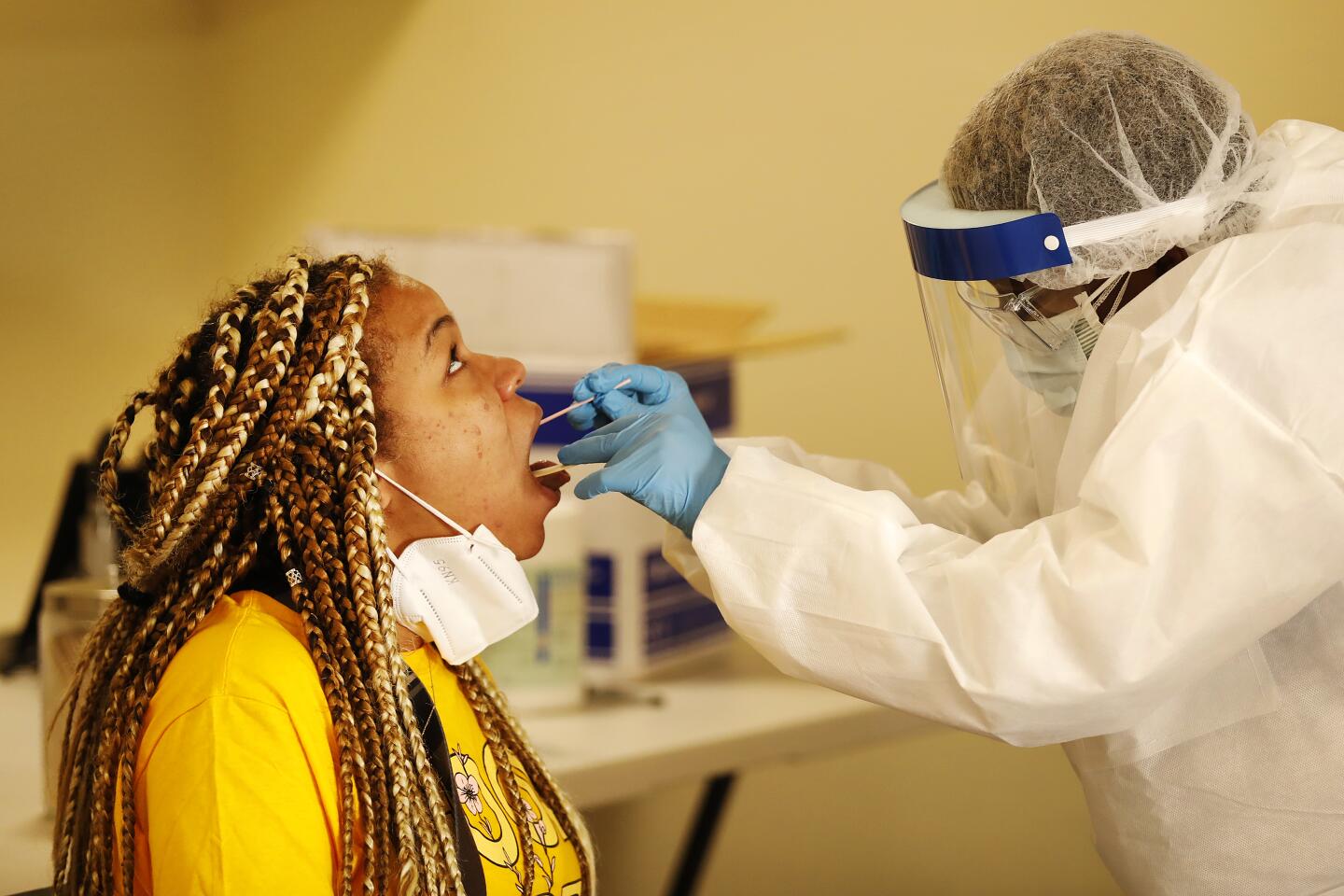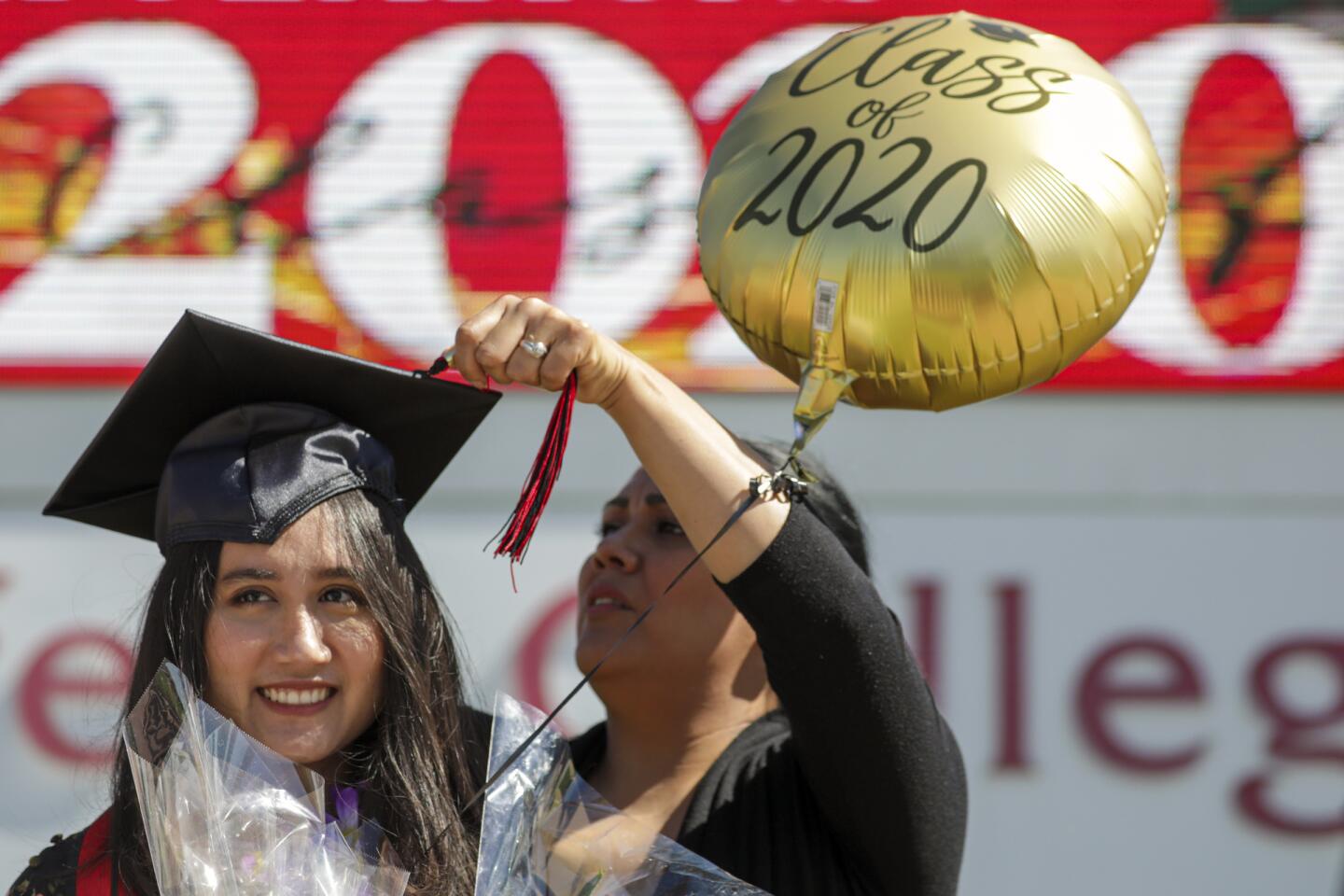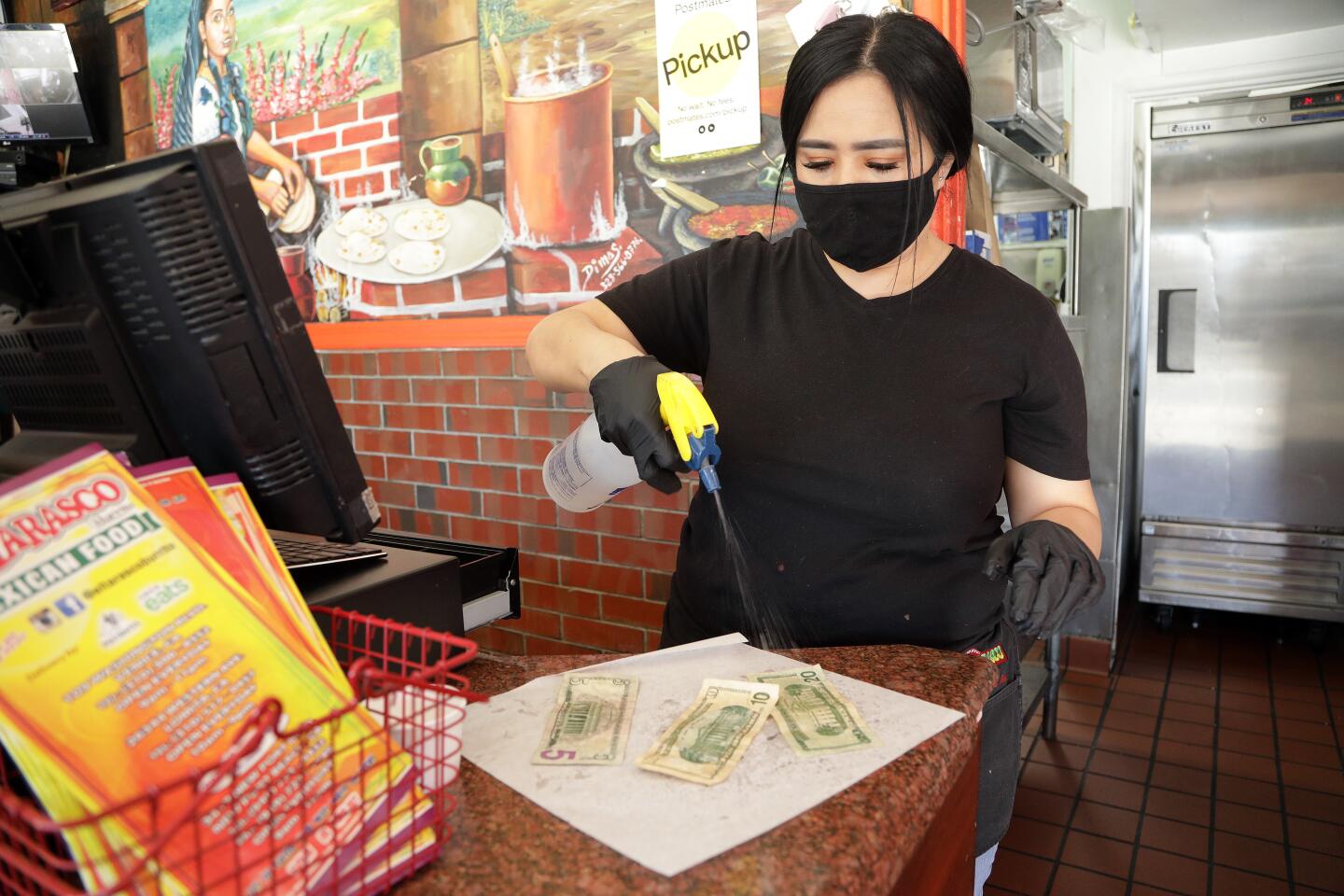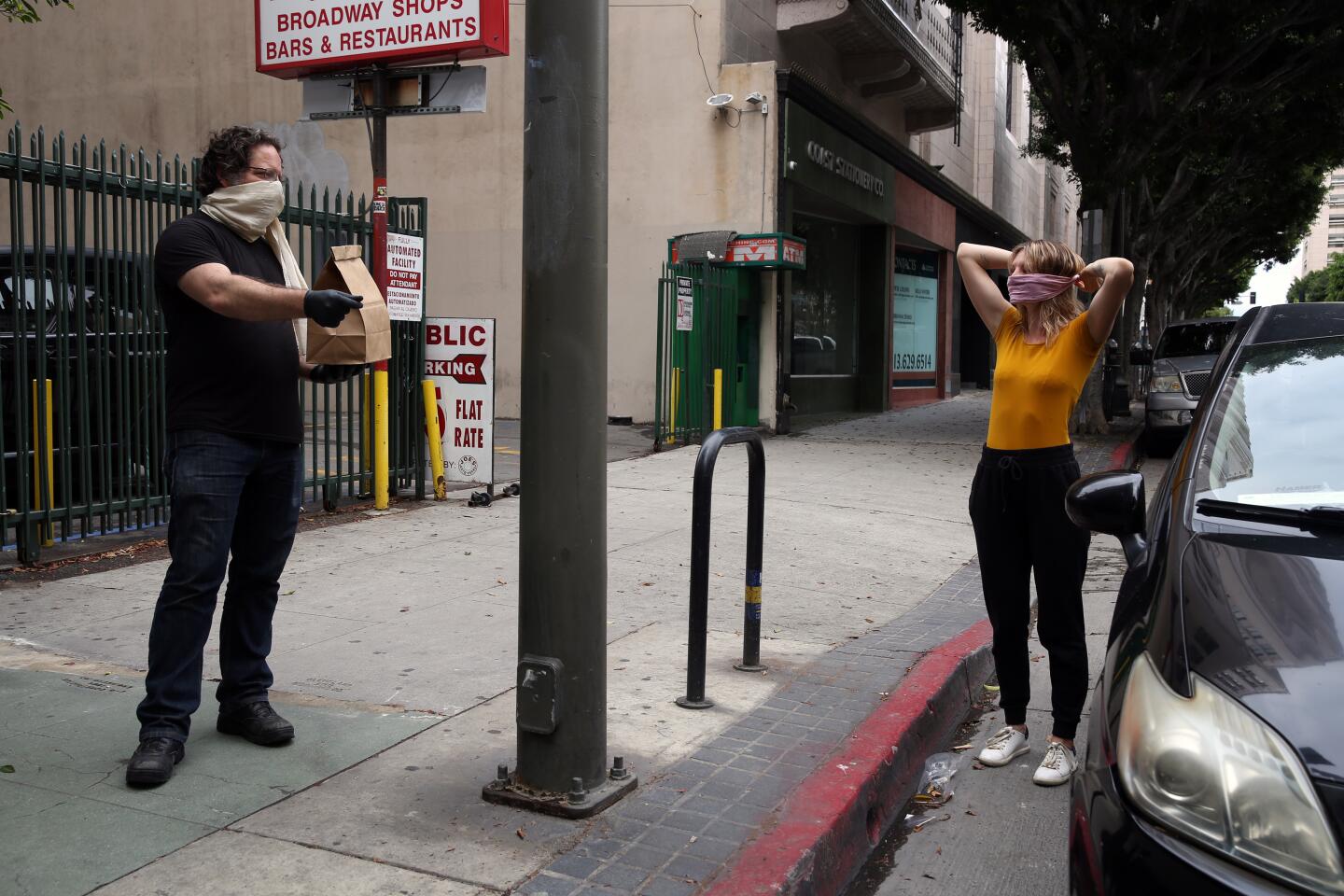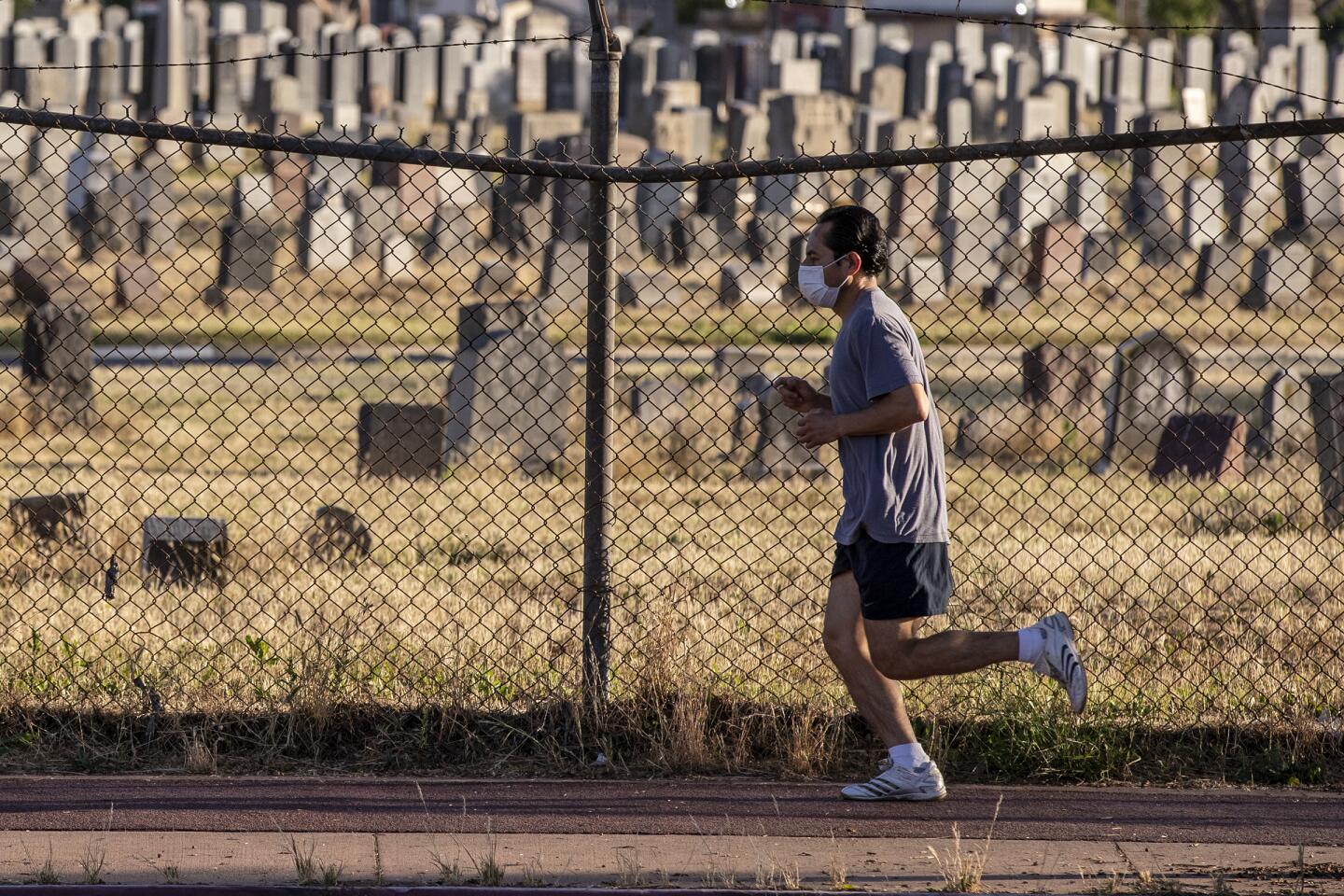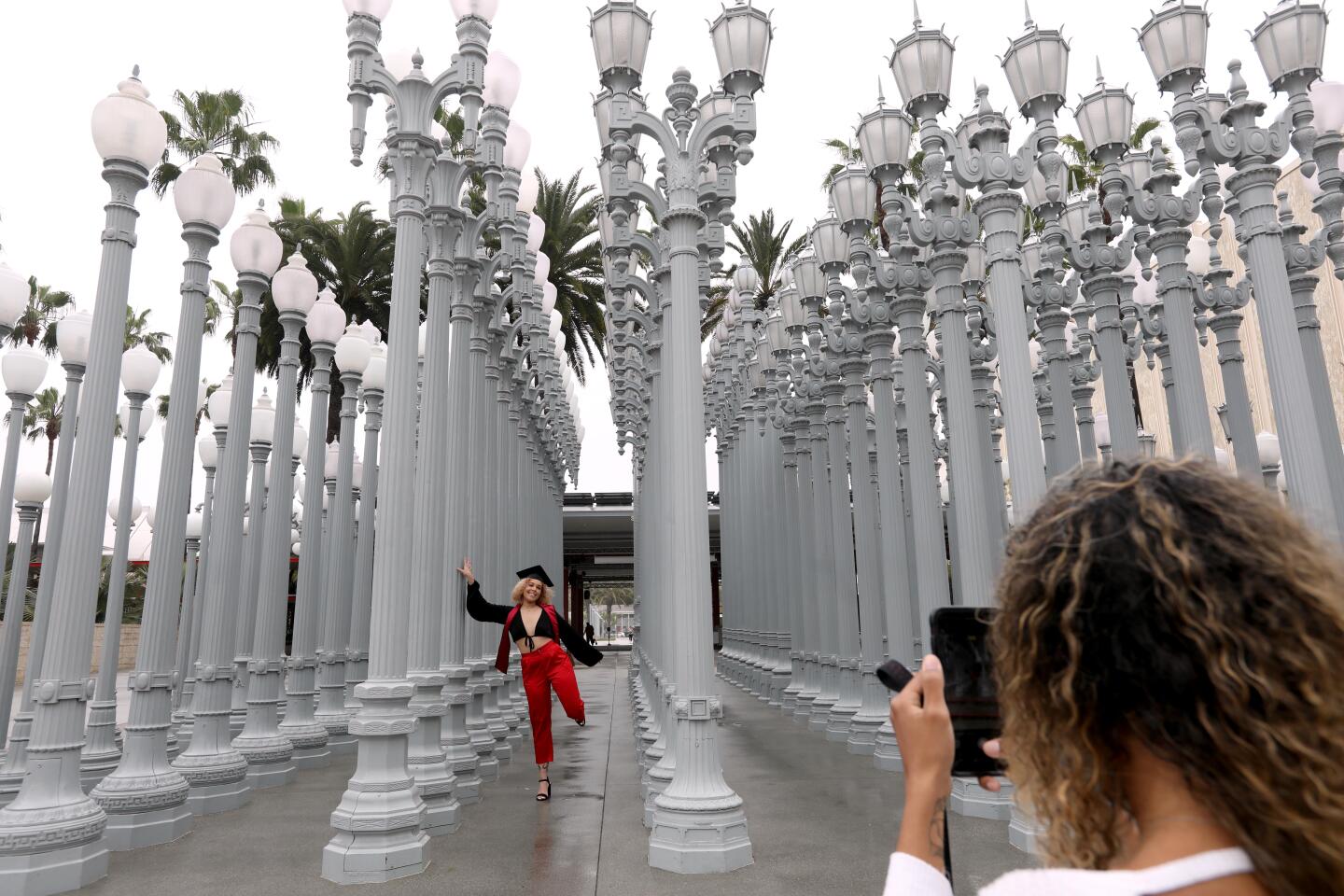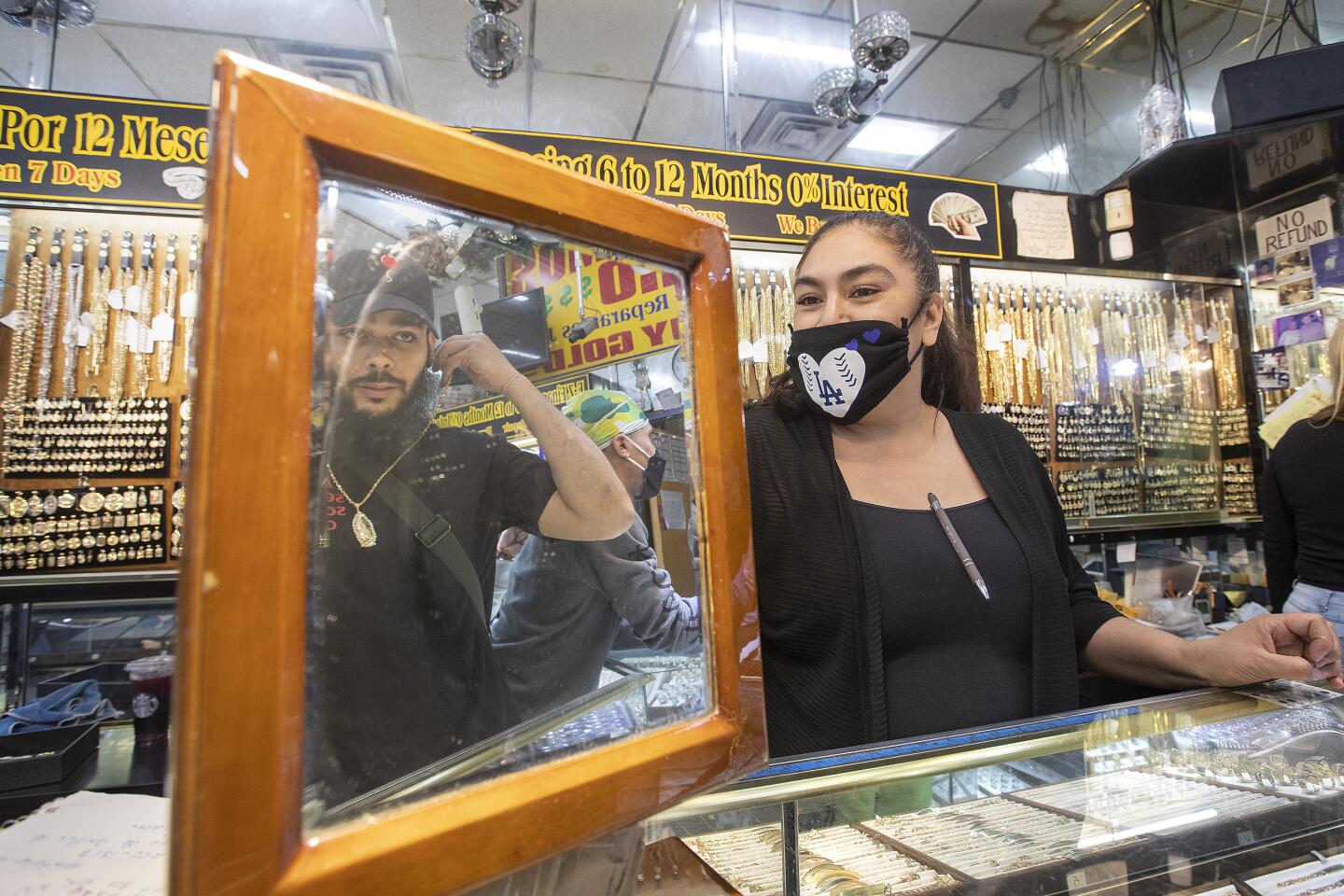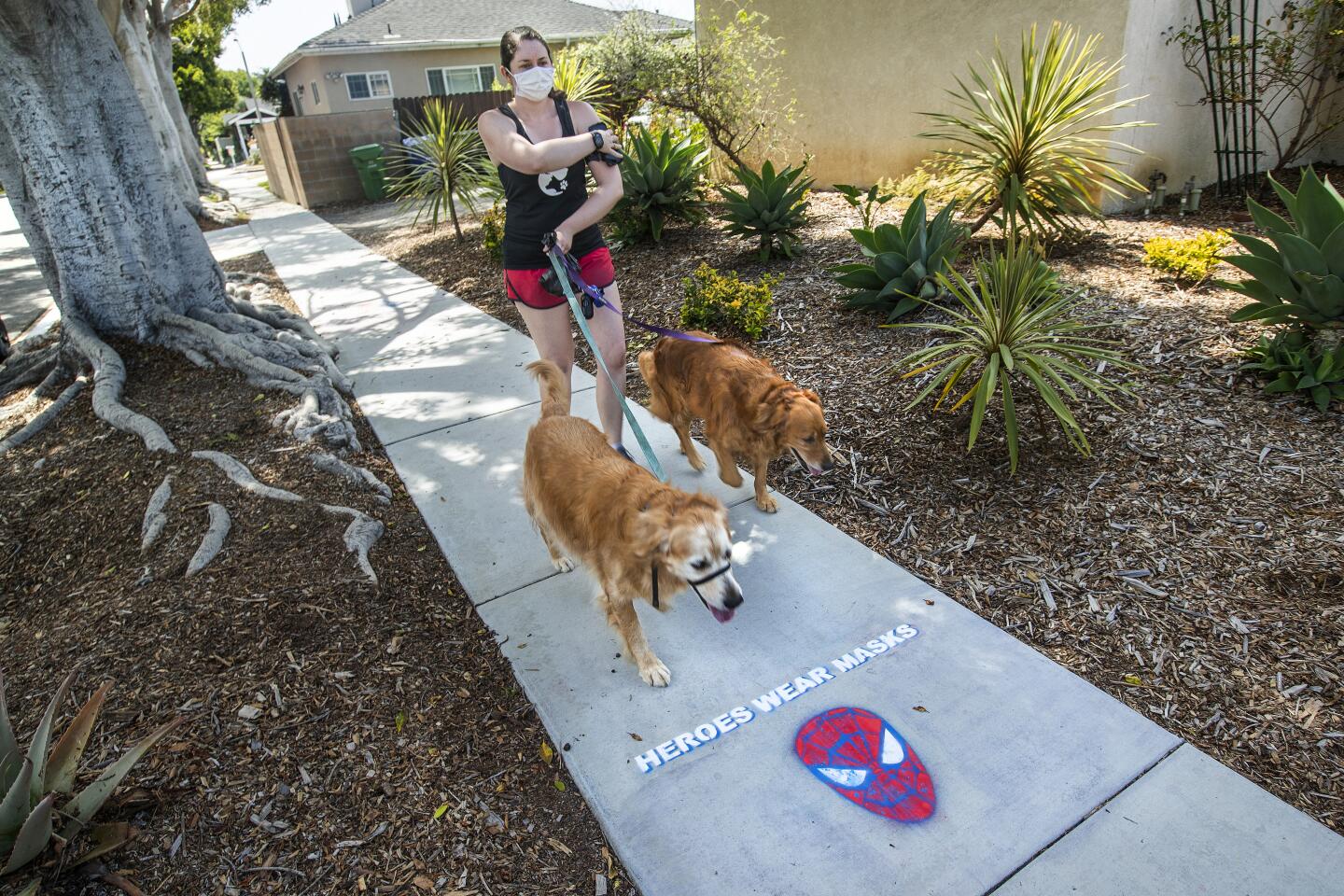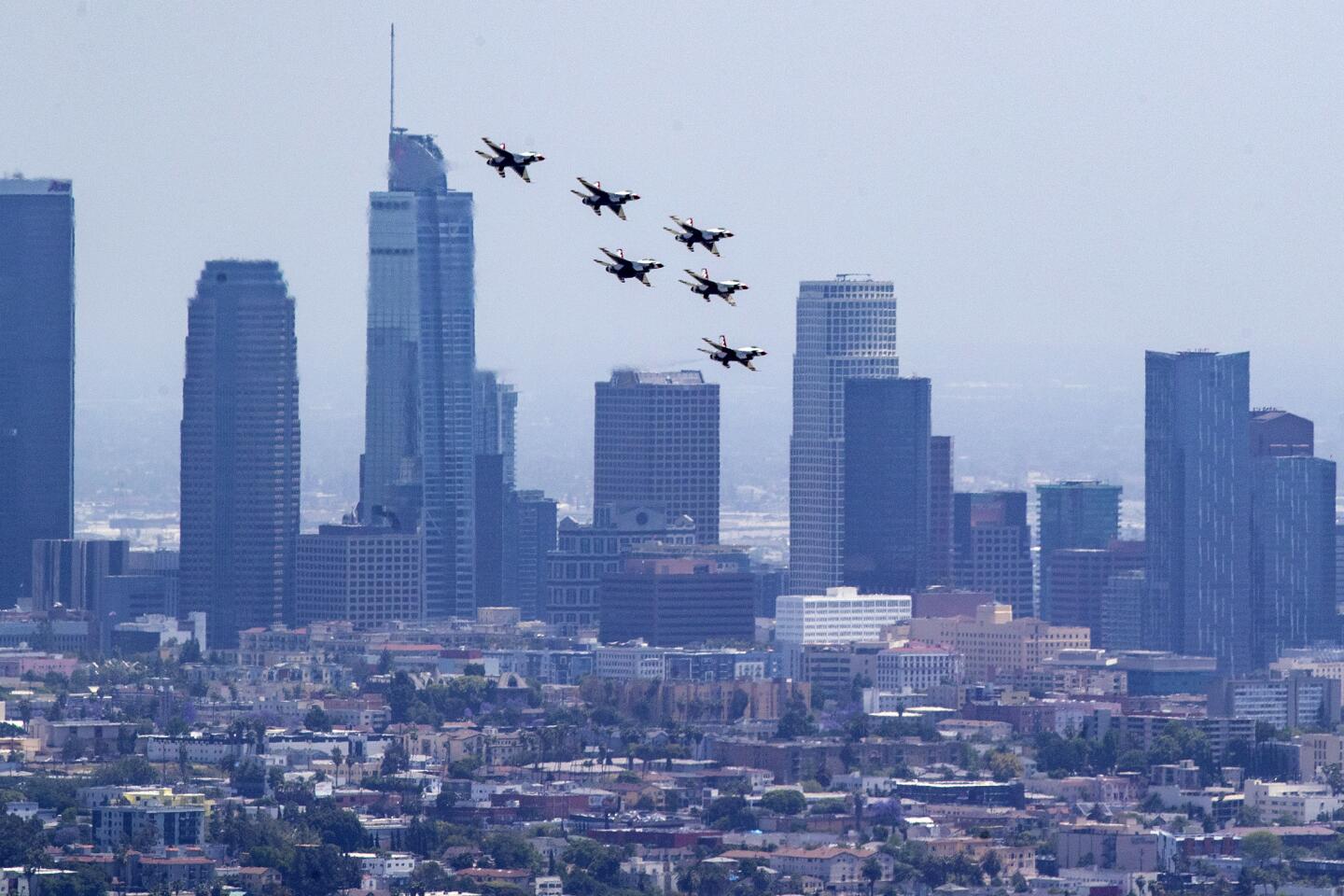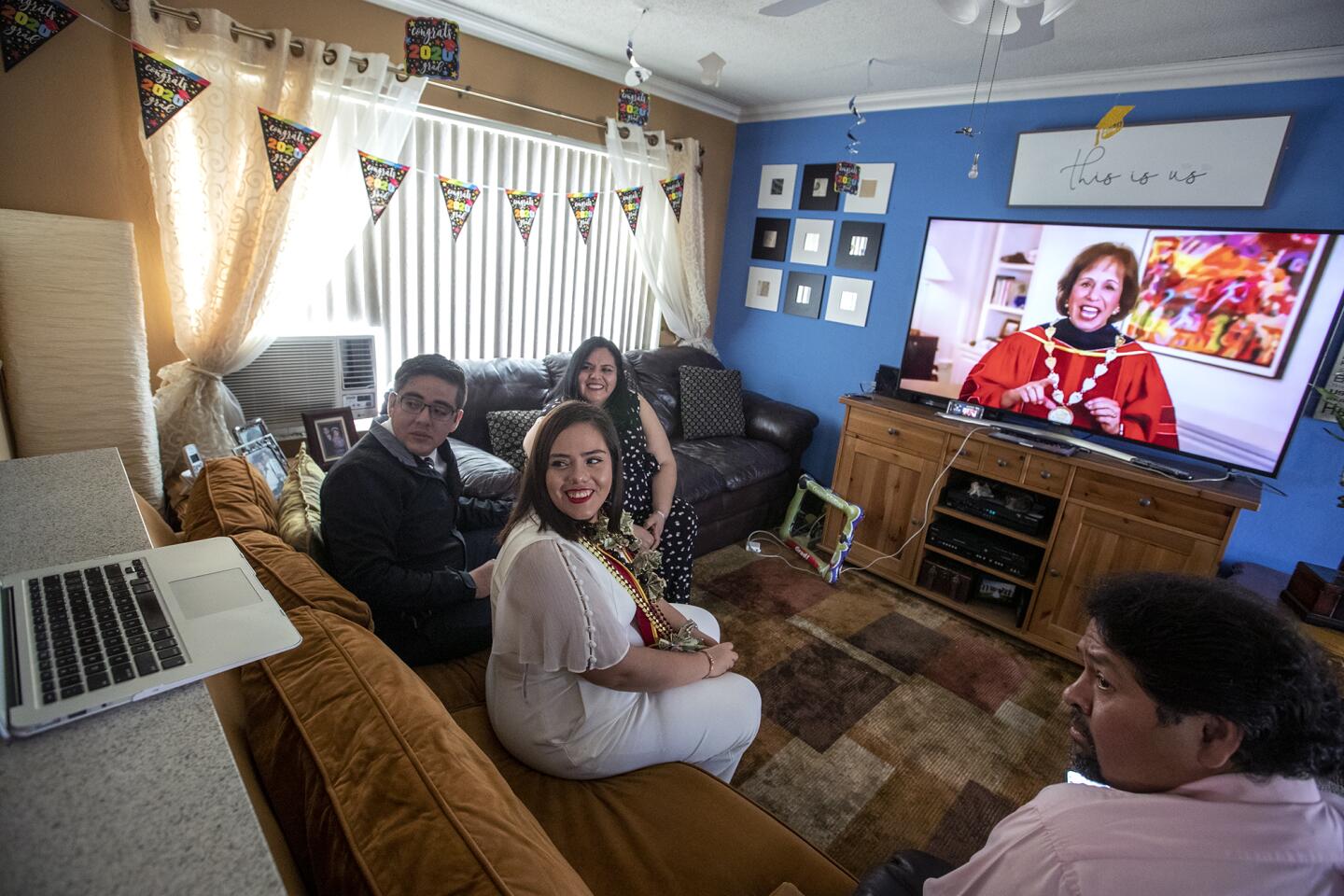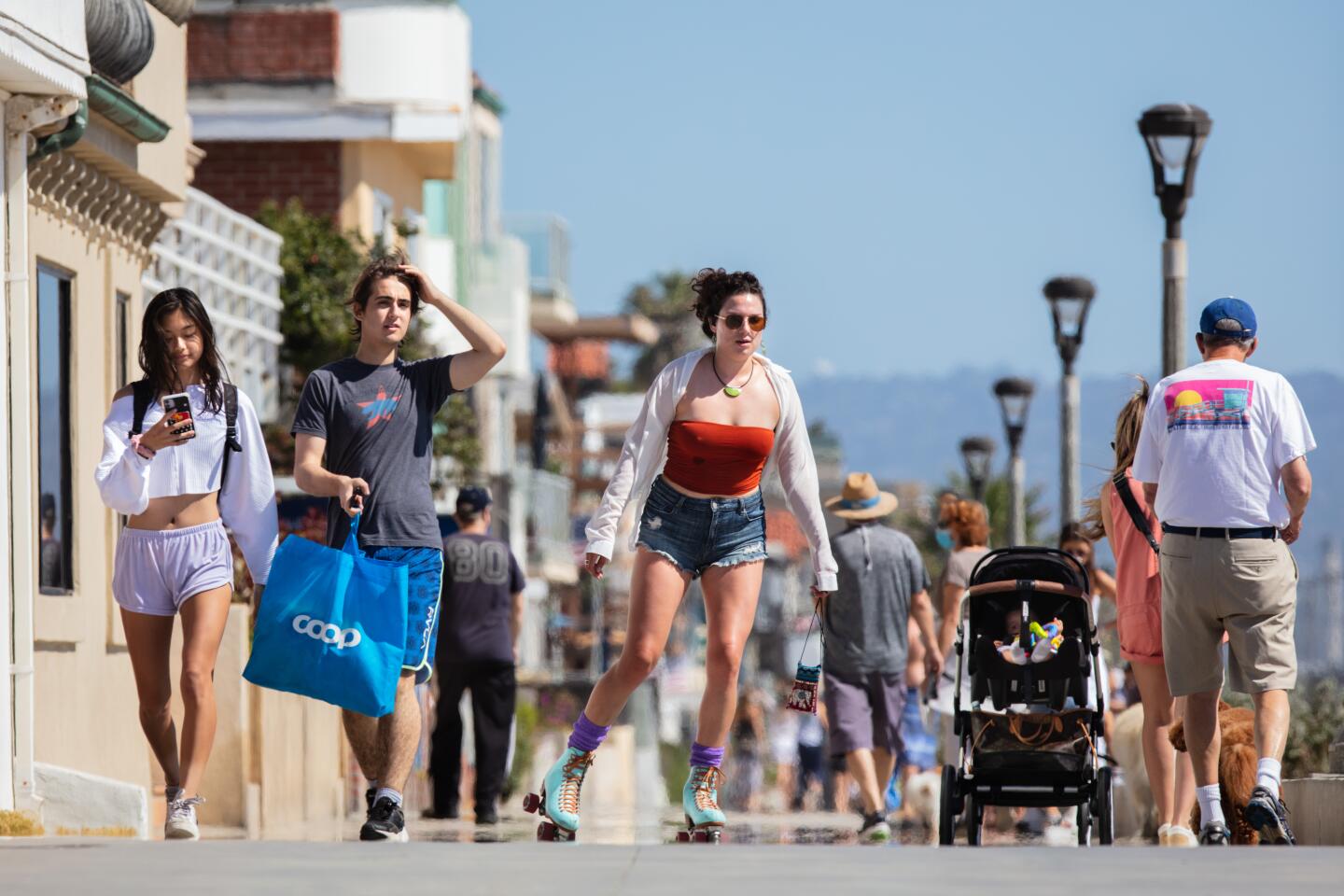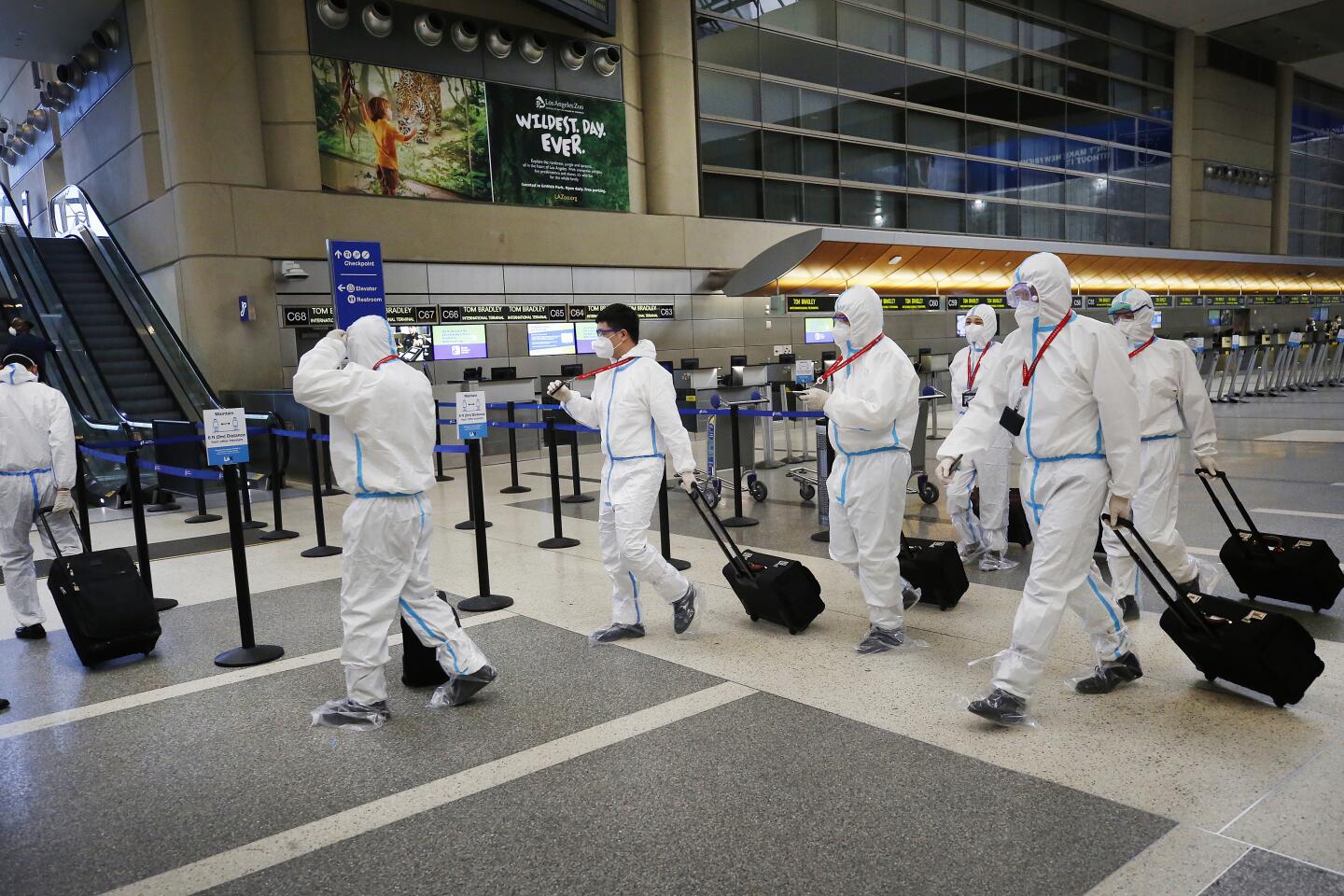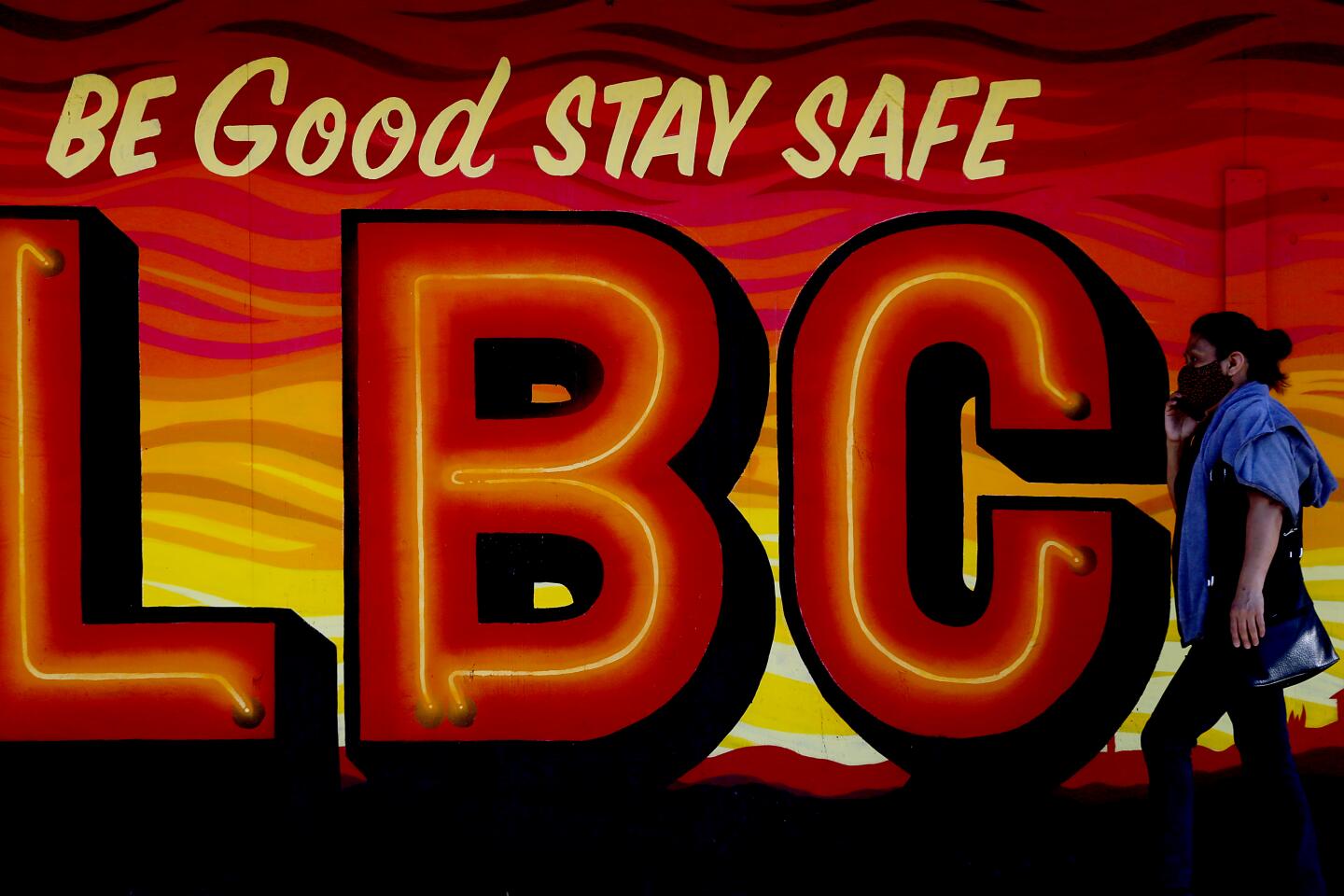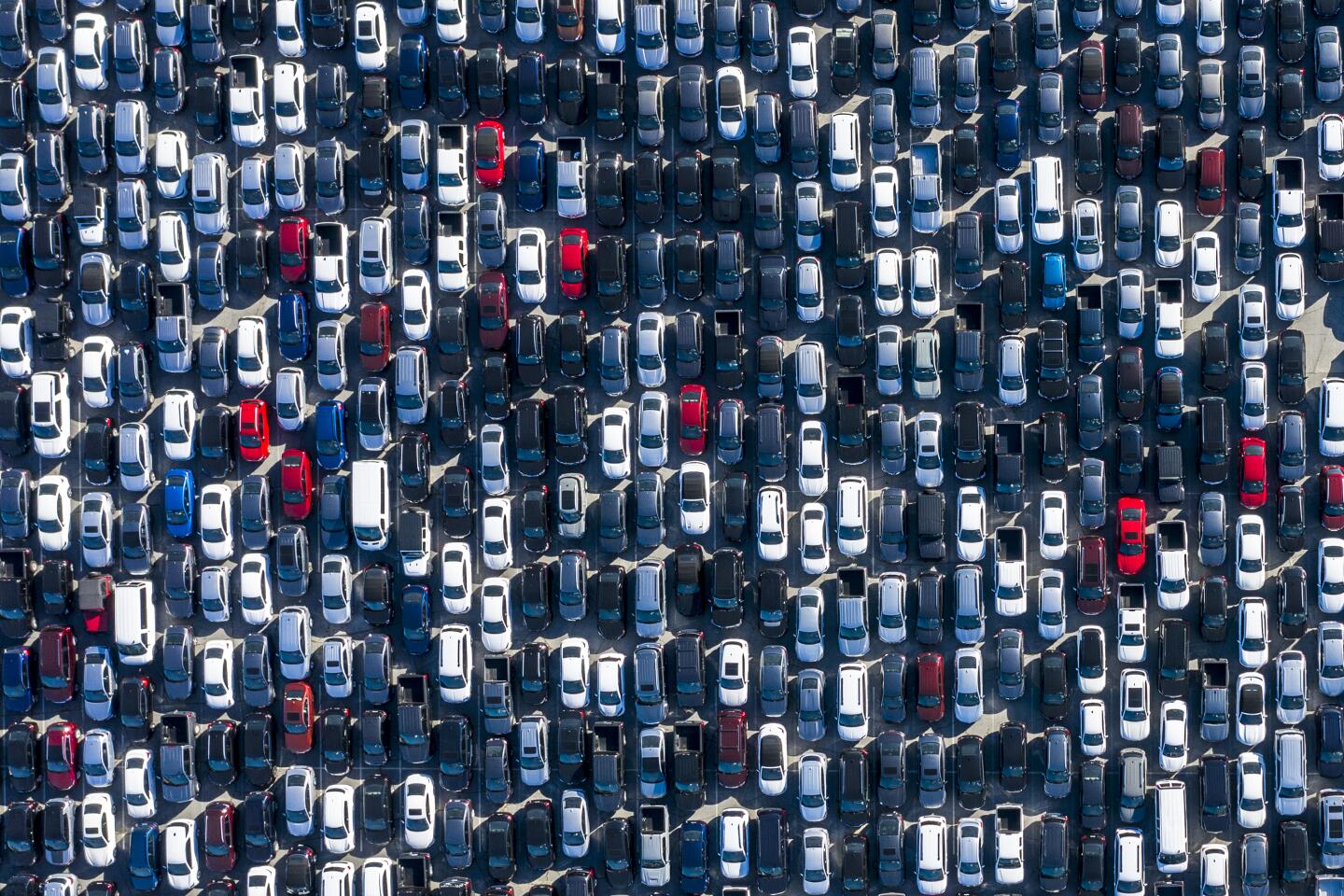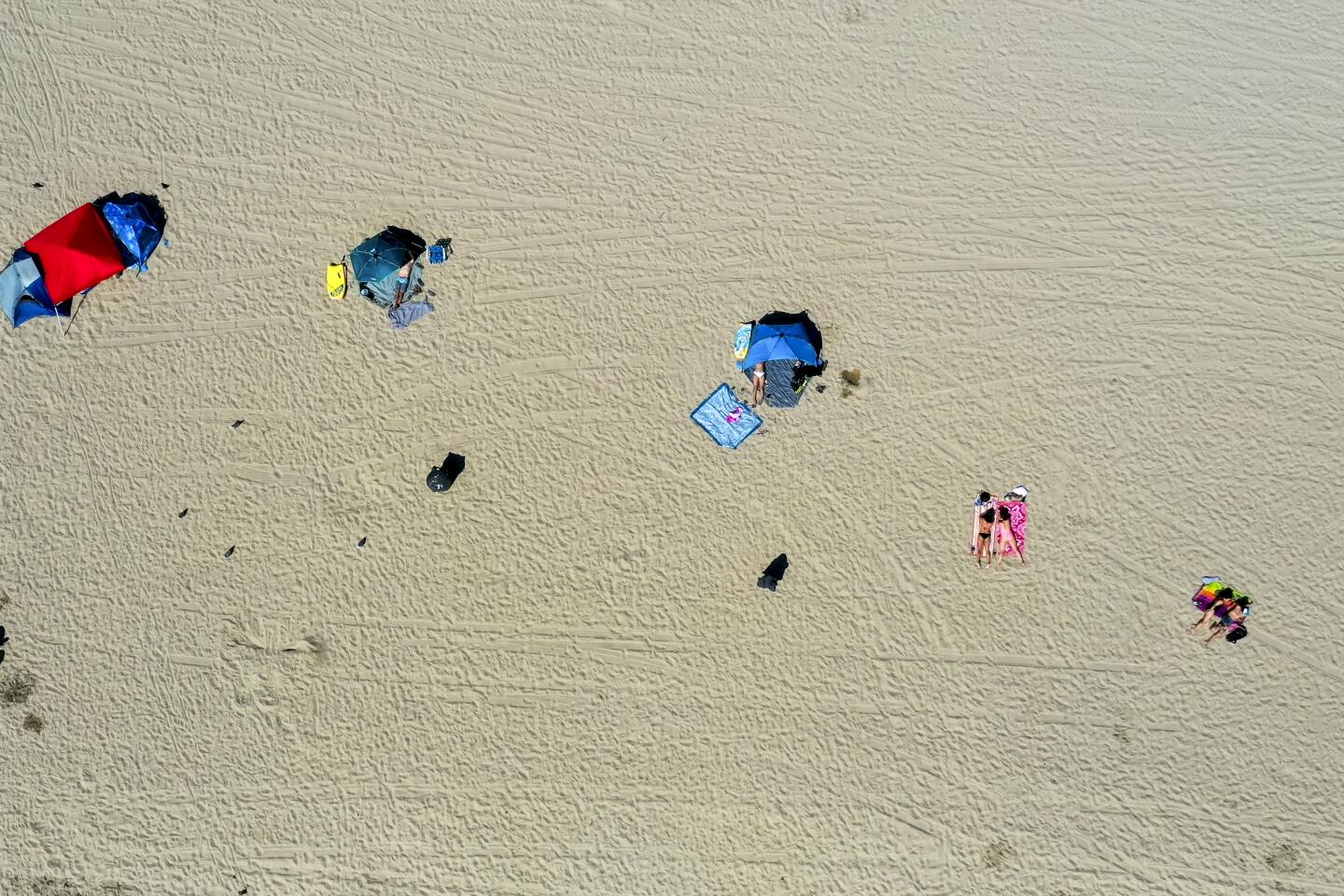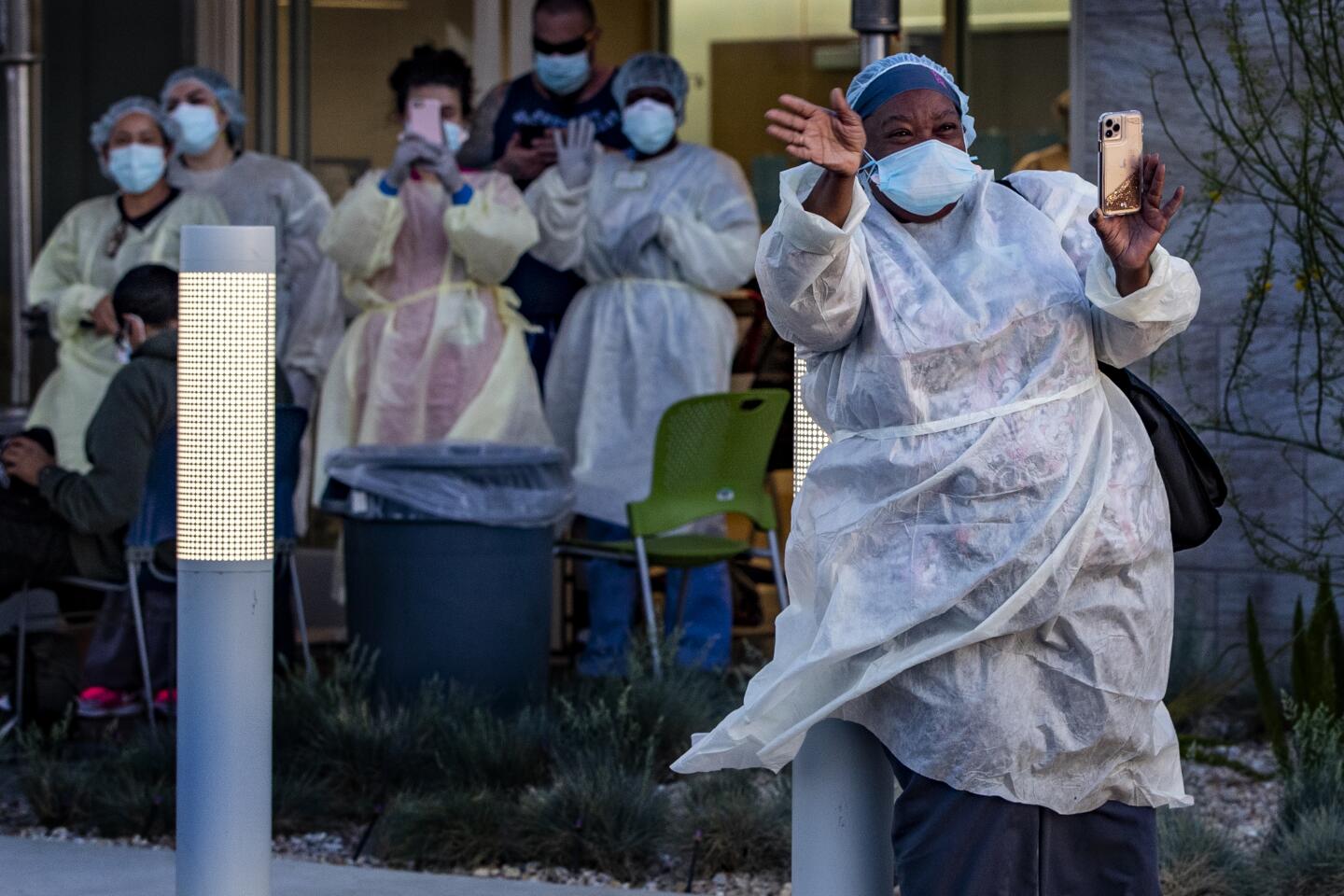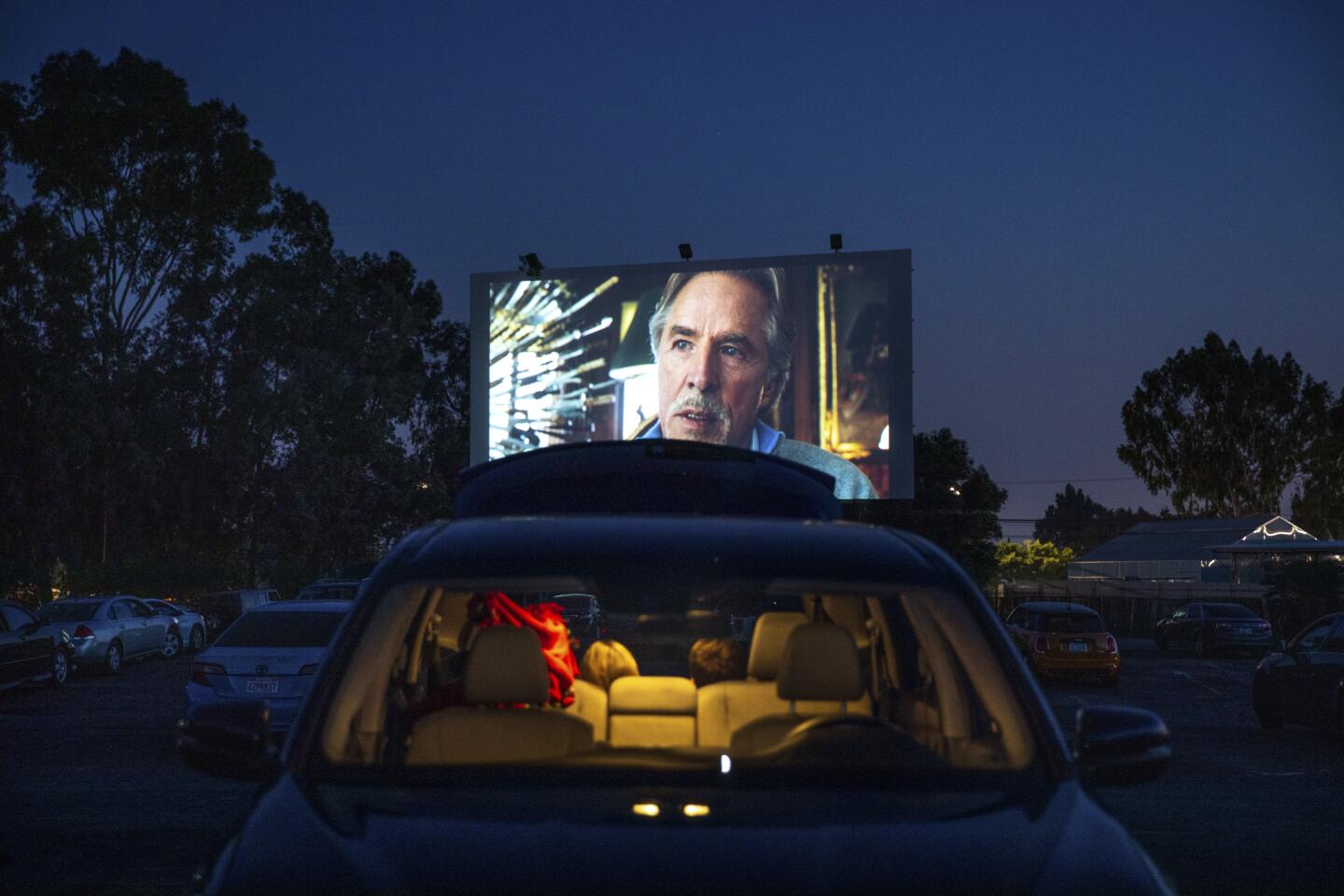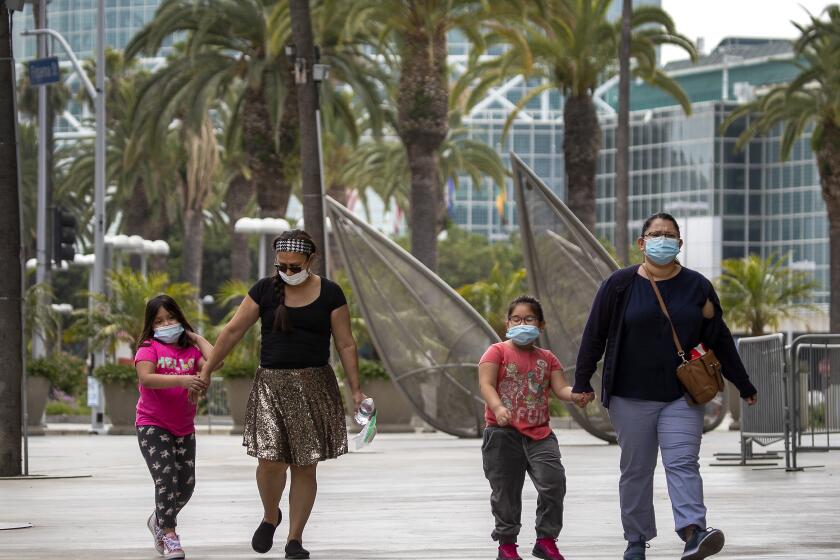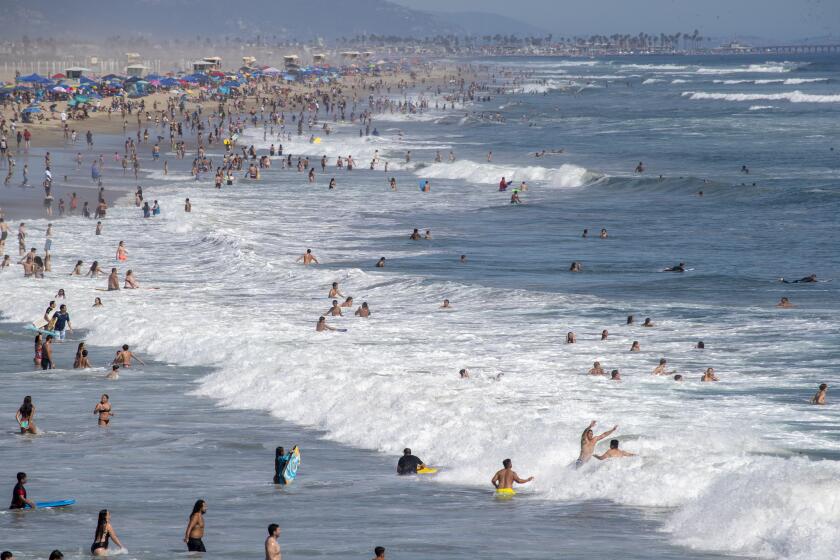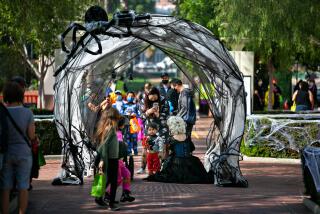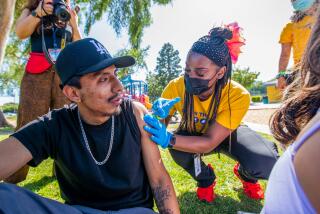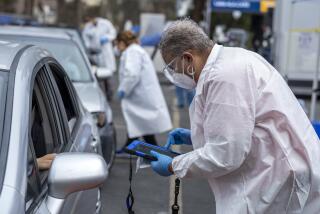Californians are desperate to see friends and family. Officials debate how to do so safely

- Share via
As the summer begins, many Californians are feeling the pull of summertime parties even as the worst pandemic in a century continues to fester across the country.
So how might that be done as safely as possible?
While Los Angeles County continues to ban gatherings of people who are not part of the same household — beyond assembly for political protests or religious services — the San Francisco Bay Area is beginning to allow small, limited gatherings, primarily outdoors.
Part of the reason is that the coronavirus has had less of an impact in the Bay Area. While L.A. County has seen about 31 deaths per 100,000 residents, San Francisco has recorded about six deaths per 100,000.
And warning signs persist in L.A. County, with the seven-day weekly average of confirmed new cases continuing to rise in the nation’s most populous county.
L.A. County’s director of public health, Barbara Ferrer, on Tuesday reported more than 2,000 new cases for the fourth time in a week. She said it was “highly likely” that the rise is related to people gathering during protests, she said, in addition to clusters of visitors at restaurants and parties as well as newly reopened workplaces where employees are in close contact with one another.
“I’m really sorry — I know how desperate people are to be able to get back to events … but this is not a time for parties or gatherings at your house,” Ferrer said earlier this month.
County officials have continued to emphasize the need for residents to proactively get tested for the virus if they’ve been to a protest or large gathering in recent weeks, especially those who may have come into contact for more than 15 minutes with someone not wearing a face mask. It’s nearly impossible to trace the origin of a spread in public spaces because contact tracers do not track those types of cases, Ferrer said.
The news came shortly before Dr. Anthony Fauci warned that easing restrictions does not mean it’s safe to resume normal life again.
In the Bay Area, however, officials have issued new rules allowing small, limited gatherings, acknowledging that people are meeting up and safety protocols are needed to keep them as safe as possible.
“We … know people are already congregating outside their households in more risky ways. This model provides guardrails so small gatherings can occur in a safe way, especially as we move into the summer season,” said Dr. Matt Willis, health officer for Marin County.
Under new rules in San Francisco, gatherings are to be held outdoors, except to use bathrooms, and last no longer than two hours. And people should wear face coverings at all times except when eating and drinking. unless they have an exemption from a healthcare provider.
“It’s less likely to be transmitted outdoors,” said Dr. Grant Colfax, San Francisco’s director of public health. “My mask protects you, and your mask protects me.”
People shouldn’t attend more than two gatherings a week. Children under 12 are not required to wear a face covering, and children 2 years or younger should not wear masks.
Meal gatherings with people from different households can be held with no more than six people; and gatherings of no more than 12 people from different households can be held for special events. It’s strongly recommended that guests at meal settings stay six feet apart from those not in their household, and at other gatherings the six-foot distance is required.
Officials urge people to not shake hands or hug friends, and instead do things like touch elbows or offer hand signals like a peace sign or sign “I Love You” in sign language. Children not from the same family should stay six feet away from others.
California reported more than 6,000 infections Tuesday — the largest single-day count in the state since the pandemic hit the U.S.
Clubs, faith-based organizations and other groups hosting gatherings at a home or in a park must follow additional rules. They include: developing a health and safety plan; having a social distancing protocol that details cleaning and disinfecting high-touch surfaces; keeping a potential list of guests for three weeks to contact in case someone turns out to be infected with the coronavirus; and providing face coverings, hand sanitizers or handwashing stations.
The Bay Area’s second-most populous county, Alameda County, offers a framework in which people from more than one household can meet in what’s called a “social bubble.” This is defined as a stable group of no more than 12 people who socialize together outdoors. Members can be part of only one social bubble at a time and should wear face coverings as much as possible. They also are encouraged to comply with social distancing requirements.
Contra Costa County has also outlined social bubble guidelines and warned that meeting people indoors is much riskier.
“If you meet people indoors, you must always wear a face covering. Make sure you are in a room with open windows or good ventilation. Try not to touch surfaces inside. … Try to avoid using other people’s bathrooms, if possible,” the county said.
For two consecutive days, California reported more than 6,000 COVID-19 infections.
That said, Contra Costa County officials noted that seeing loved ones and friends “can be important for your mental health.”
Santa Clara County, the Bay Area’s most populous county, now allows people to meet with one other household to socialize, but gatherings must be outdoors and people from different households must remain six feet apart.
“Visiting friends or family in their homes is not allowed, except to provide essential care,” officials said.
San Mateo County also allows for social bubbles, although its health officer, Dr. Scott Morrow, emphasized that being out of the home is not completely safe and that it’s even less safe to attend gatherings of any size.
But Morrow said it’s also important to adopt a balanced policy — one that is not only focused on slowing the spread of the virus but also considers other needs of society.
“Slowing the spread of the virus is but one of many things to consider when going about the business of living. As we go through time with this pandemic, the balance needs to shift,” Morrow wrote.
Now, it’s in the public’s hands to determine how badly the pandemic will spread in the summer, Morrow wrote recently.
“You all are now the most important variable in how our future will develop. Follow the key behaviors well, including extensive use of facial coverings, and that will bode well for all of us. Don’t, and our future will be dim,” Morrow wrote.
UC San Francisco epidemiologist Dr. George Rutherford said the social bubbles are a smart way to allow people to resume normal life without drastically increasing risk of contracting the virus.
“It’s not that we’re going to be able to negotiate with the virus,” he said. “The virus isn’t reading this stuff, and all it wants to do is infect people and all it wants to do is reproduce and unfortunately it wants to reproduce in you.” Bubbles can be part of an exit strategy from shutdown, he said, and will be most safe if the people in the group are at low risk for catching the virus and continue to take all other safety precautions.
The increases in Ventura, Orange, San Bernardino and Riverside counties have contributed to an overall rise in hospitalizations recorded statewide.
Elsewhere, other counties continue to monitor a surge in cases and hospitalizations. As of Thursday, 15 counties — Contra Costa, Fresno, Imperial, Kern, Kings, Los Angeles, Riverside, Sacramento, San Bernardino, San Joaquin, Santa Barbara, Santa Clara, Stanislaus, Tulare and Ventura — are currently being monitored by the state. That’s five more than what was previously included on the watch list.
Riverside County has the second-highest number of cases in the state and recently failed to meet Gov. Gavin Newsom’s performance metrics for reopening, with an additional 4,001 cases reported in 14 days.
Officials announced Monday that they will ask about 3,500 residents selected at random to take part in an antibody study to determine if they have been exposed to the virus and have developed antibodies. The study will help the county’s planning efforts for reopening.
“We are asking those who are contacted to strongly consider taking part in the study,” said Kim Saruwatari, director of Riverside County Public Health. “It’s important to know the extent of the spread of the virus have developed antibodies. That information is vital as we move forward.”
Times staff writer Soumya Karlamangla contributed to this report.
More to Read
Sign up for Essential California
The most important California stories and recommendations in your inbox every morning.
You may occasionally receive promotional content from the Los Angeles Times.
